
Top Science News
Latest top headlines.
- Language Acquisition
- Child Development
- Infant and Preschool Learning
- Personalized Medicine
- Brain Tumor
- Brain-Computer Interfaces
- Brain Injury
- Cystic Fibrosis
- Gene Therapy
- Astrophysics
- Black Holes
- Alternative Fuels
- Energy and the Environment
- Quantum Computers
- Quantum Physics
- Spintronics Research
- Space Exploration
- Fibromyalgia
- Life Sciences
- Global Warming
- Rainforests
- Microbes and More
- Creativity Starts in the Cradle
- Potential New Treatment for Diabetes
- Atlas of Blood Vessel Pathways in Human Brain
- Prime Editing Corrects Cystic Fibrosis Mutation?
Top Physical/Tech
- How Galaxy 'Heart and Lungs' Extend Its Life
- Hydrogen Flight Looks Ready for Take-Off
- Toward Topological Quantum Computing
- Mars Likely Had Cold and Icy Past
Top Environment
- How Water Controls Speed of Muscle Contraction
- Forest Carbon Storage Declined: Drought, Fire
- Treating White-Nose Syndrome in Bats
- Downfall of Stone Age Farmers: The Plague
Health News
Latest health headlines.
- Alzheimer's
- Alzheimer's Research
- Bone and Spine
- Nervous System
- Intelligence
- Pain Control
- Child Psychology
- Educational Psychology
- Developmental Biology
- Pregnancy and Childbirth
- Computer Modeling
- Mathematical Modeling
- Mathematics
- Social Psychology
- Medical Topics
- Healthy Aging
Health & Medicine
- AI Predicts Progression of Alzheimer's
- Insights Into Alzheimer's Disease Mechanisms
- Nanosized Sensor Records Spinal Cord Neurons
- New Neural Biomarker for OCD
Mind & Brain
- Inflammation Spurs Muscle Weakness After Illness
- Critical Pain-Regulating Brain Region
- Kids May Trust AI Chatbots as If They Were Human
- Spinal Cord Malformations in Embryos
Living Well
- When to Trust an AI Model
- Holidays: Anticipation Making Time Seem to Fly
- Loneliness Increases Risk of Memory Loss
- Detect When Older Adults Fall at Home
Physical/Tech News
Latest physical/tech headlines.
- Spintronics
- Materials Science
- Pharmacology
- Pharmaceuticals
- Biochemistry
- Organic Chemistry
- Breastfeeding
- Medical Technology
- Extrasolar Planets
- Kuiper Belt
- Space Station
- Space Policy
- Asteroids, Comets and Meteors
- Dark Matter
- Robotics Research
- Artificial Intelligence
- Computers and Internet
- Photography
- Educational Technology
- Today's Healthcare
- Children's Health
- Public Health
Matter & Energy
- Light-Induced Meissner Effect
- Development of New Antimicrobial Drugs
- Nanoplastics and 'Forever Chemicals'
- Quadrupolar Nuclei Measured by Zero-Field NMR
Space & Time
- Vivid Portrait of Interacting Galaxies
- What Is a Planet? New Proposal
- Increasing Militarization of Outer Space
- The Origins of Dark Comets
Computers & Math
- Humanoid Robots: Learning Dance Moves
- Custom AI Tools for Digital Pathology
- Is AI Valuable for Healthcare?
- 'Light-Twisting' Behavior of Ultrathin Material
Environment News
Latest environment headlines.
- Wild Animals
- New Species
- Evolutionary Biology
- Immune System
- Infectious Diseases
- Ozone Holes
- Environmental Issues
- Endangered Animals
- Early Climate
- Ancient Civilizations
- Anthropology
- Origin of Life
- Ancient DNA
- Agriculture and Food
- Endangered Plants
- Food and Agriculture
Plants & Animals
- Hatcheries, Wild Salmon, and Diversity
- When Co-Habiting Animal Species Share Culture
- How Domestic Rabbits Become Feral
- Bacteria 'Turn Off' Immune System to Survive
Earth & Climate
- Rolling Hills Estates Landslide: Early Cracks
- Impact of Wildfires On Ozone Layer Dynamics
- How Plant Cold Specialists Can Adapt
- Unprecedented Warming Threatens Lakes
Fossils & Ruins
- Early Neolithic Groups: Species Selection
- Ancient Cultures in Canada's Arctic
- What Ancient Dingo DNA Shows Us
- Earliest Plant Farming in East Africa
Society/Education News
Latest society/education headlines.
- Snow and Avalanches
- Nature of Water
- Health Policy
- Neuroscience
- Learning Disorders
- Video Games
- Civil Engineering
- Workplace Health
- Mental Health Research
- Consumer Behavior
- Relationships
Science & Society
- Should Geoengineering Be Used On Glaciers?
- Removing PFAS from Your Drinking Water
- Wild Vs Cultivated Cocaine
- Telemedicine Adoption Among US Hospitals
Education & Learning
- Brain Region's Role in Hearing and Learning
- Brain-Imaging Study Reveals Emerging Curiosity
- Digital City-Building Games Shape the Future
- Infant Development and Cognition: Neighborhood
Business & Industry
- Employees Like Human Performance Monitors ...
- Cutting Workplace Injuries and Illness
- The Science of Procrastination
- Conversation Is Changing: Resonating Together
- Neanderthals and Other Ancient Humans Together
- Insight Into One of Life's Earliest Ancestors
- Dark Matter in Dwarf Galaxy Tracked
- 52,000-Year-Old Woolly Mammoth Chromosomes
Trending Topics
Strange & offbeat, about this site.
ScienceDaily features breaking news about the latest discoveries in science, health, the environment, technology, and more -- from leading universities, scientific journals, and research organizations.
Visitors can browse more than 500 individual topics, grouped into 12 main sections (listed under the top navigational menu), covering: the medical sciences and health; physical sciences and technology; biological sciences and the environment; and social sciences, business and education. Headlines and summaries of relevant news stories are provided on each topic page.
Stories are posted daily, selected from press materials provided by hundreds of sources from around the world. Links to sources and relevant journal citations (where available) are included at the end of each post.
For more information about ScienceDaily, please consult the links listed at the bottom of each page.
Science News

Stunning Tang dynasty mural in tomb unearthed in China may portray a 'Westerner' man with blond hair
By Tom Metcalfe published 15 July 24
A Tang dynasty tomb unearthed in China dates from the 700s, and the murals on its walls give an unprecedented view of daily life at the time.

What would happen if a black hole wandered into our solar system?
By Ashley Hamer published 15 July 24
Black holes aren't "cosmic vacuum cleaners," but what would happen if one wandered into our solar system?

Earth from space: Gravity waves spark pair of perfect cloud ripples above uninhabited islands
By Harry Baker published 15 July 24
This 2023 astronaut photo shows a pair of perfectly aligned "wave clouds" rippling above the Crozet Islands in the Southern Ocean. The unusual patterns are the result of changes in temperature caused by gravity waves.

People are falling in love with AI. Should we worry?
By Valerie A. Lapointe, David Lafortune, Simon Dubé published 14 July 24
AI romantic companions can save some people from loneliness, but they also have a dark side.

Mysterious Maya underground structure unearthed in Mexico
By Laura Geggel published 14 July 24
Archaeologists in Campeche, Mexico, have found an underground structure beneath a Maya ball court, as well as offerings on top of a Maya pyramid at another site.

Space photo of the week: Warped 'penguin galaxy' spotted by JWST is waddling toward certain doom
By Brandon Specktor published 14 July 24
To mark its second anniversary of operations, James Webb Space Telescope scientists share a stunning view of the Penguin and Egg galaxies as they slowly collide.
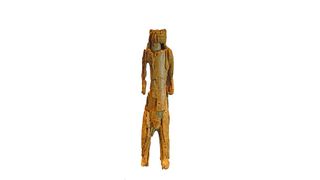
Lion Man: The oldest known evidence of religious belief in the world
By Jennifer Nalewicki published 13 July 24
Discovered inside a cave, the ivory statuette depicts a human and a lion.

HIV prevention drug found 100% effective in clinical trial
By Linda-Gail Bekker published 13 July 24
The drug, lenacapavir, provided better protection than other preventive medications.

Panda ant: The wasps whose black and white females have giant stingers and parasitic babies
By Lydia Smith published 13 July 24
Panda ants are actually wasps masquerading as an adorable ant, with black and white females possessing stingers half as long as their entire bodies.

Do animals have friends?
By Mindy Weisberger published 13 July 24
Friendship is a key component of human social relationships. Is this also true for animals?

Is MSG bad for you?
By Donavyn Coffey published 13 July 24
The case against MSG began with a letter to the editor back in the 1960s. But was there any truth to it?

2,400 people in Oregon potentially exposed to HIV, hepatitis through botched anesthesia
By Nicoletta Lanese published 12 July 24
An anesthesiologist contracted at various Oregon health care facilities did not practice proper infection control, posing a risk to patients.

Milky Way's rarest black hole may lurk behind 7 stars that 'shouldn't be there'
By Harry Baker published 12 July 24
Seven strangely-behaving stars in the Milky Way's Omega Centauri cluster may be under the influence of an extremely rare type of black hole, new research suggests.

Scientists breed most human-like mice yet
By Emily Cooke published 12 July 24
Scientists have bred mice that are just like us — at least in terms of their immune systems.

LA may be spared 'horrifying' fate of the 'Big One' from San Andreas, simulation suggests
By Stephanie Pappas published 12 July 24
A new simulation of the shaking from a magnitude 7.8 south San Andreas earthquake suggests that Los Angeles might avoid a worst-case scenario.

Early Prime Day earbuds deal: We've never seen these Beats earbuds cheaper on Amazon
By Lloyd Coombes published 12 July 24
Deal Save almost 25% on the Beats Studio Plus running headphones with AirPods-like features in this early Prime Day earbuds deal, that's a saving of $40.

Entire pod of 89 pilot whales dies on Scottish beach in freak mass stranding
By Sascha Pare published 12 July 24
Dozens of long-finned pilot whales have beached and died on Sanday in the Orkney Islands, Scotland, in the biggest mass stranding the country has seen since 1995.

Remains of hundreds of 7,000-year-old 'standing stone circles' discovered in Saudi Arabia
By Owen Jarus published 12 July 24
Archaeologists in Saudi Arabia have now excavated eight ancient stone circles that likely served as homes to people more than 7,000 years ago.

Norway's Dragon's Eye: The fantastical 'pothole' that emerged from ice 16,000 years ago
Norway's photogenic "Dragon's Eye" likely formed around 20,000 years ago, when all of Scandinavia sat beneath an enormous mass of ice called the Fennoscandian Ice Sheet.

James Webb Space Telescope sees an ancient black hole dance with colliding galaxies
By Robert Lea published 12 July 24
Using the James Webb Space Telescope, astronomers have witnessed the dramatic dance between a supermassive black hole-powered quasar and merging galaxies less than a billion years after the Big Bang.
- View Archive
Sign up for the Live Science daily newsletter now
Get the world’s most fascinating discoveries delivered straight to your inbox.
- 2 What causes you to get a 'stitch in your side'?
- 3 Newly discovered asteroid larger than the Great Pyramid of Giza will zoom between Earth and the moon on Saturday
- 4 China opens Chang'e 6 return capsule containing samples from moon's far side
- 5 Neanderthals cared for 6-year-old with Down syndrome, fossil find reveals
- 2 Tasselled wobbegong: The master of disguise that can eat a shark almost as big as itself
- 4 2,000 years ago, a bridge in Switzerland collapsed on top of Celtic sacrifice victims, new study suggests
- 5 Self-healing 'living skin' can make robots more humanlike — and it looks just as creepy as you'd expect
Last updated 09/07/24: Online ordering is currently unavailable due to technical issues. We apologise for any delays responding to customers while we resolve this. For further updates please visit our website: https://www.cambridge.org/news-and-insights/technical-incident
We use cookies to distinguish you from other users and to provide you with a better experience on our websites. Close this message to accept cookies or find out how to manage your cookie settings .
Login Alert

- > Journals
- > Antimicrobial Stewardship & Healthcare Epidemiology
- > Volume 3 Issue 1
- > The effectiveness of COVID-19 vaccine in the prevention...

Article contents
- Conclusions:
Supplementary material
Financial support, competing interests, the effectiveness of covid-19 vaccine in the prevention of post-covid conditions: a systematic literature review and meta-analysis of the latest research.
Published online by Cambridge University Press: 13 October 2023
- Supplementary materials
We performed a systematic literature review and meta-analysis on the effectiveness of coronavirus disease 2019 (COVID-19) vaccination against post-COVID conditions (long COVID) among fully vaccinated individuals.
Systematic literature review/meta-analysis.
We searched PubMed, Cumulative Index to Nursing and Allied Health, EMBASE, Cochrane Central Register of Controlled Trials, Scopus, and Web of Science from December 1, 2019, to June 2, 2023, for studies evaluating the COVID-19 vaccine effectiveness (VE) against post-COVID conditions among fully vaccinated individuals who received two doses of COVID-19 vaccine. A post-COVID condition was defined as any symptom that was present four or more weeks after COVID-19 infection. We calculated the pooled diagnostic odds ratio (DOR) (95% confidence interval) for post-COVID conditions between fully vaccinated and unvaccinated individuals. Vaccine effectiveness was estimated as 100% x (1-DOR).
Thirty-two studies with 775,931 individuals evaluated the effect of vaccination on post-COVID conditions, of which, twenty-four studies were included in the meta-analysis. The pooled DOR for post-COVID conditions among fully vaccinated individuals was 0.680 (95% CI: 0.523–0.885) with an estimated VE of 32.0% (11.5%–47.7%). Vaccine effectiveness was 36.9% (23.1%–48.2%) among those who received two doses of COVID-19 vaccine before COVID-19 infection and 68.7% (64.7%–72.2%) among those who received three doses before COVID-19 infection. The stratified analysis demonstrated no protection against post-COVID conditions among those who received COVID-19 vaccination after COVID-19 infection.
Receiving a complete COVID-19 vaccination prior to contracting the virus resulted in a significant reduction in post-COVID conditions throughout the study period, including during the Omicron era. Vaccine effectiveness demonstrated an increase when supplementary doses were administered.
In the last three years, extensive research has demonstrated the safety and efficacy of COVID-19 (Coronavirus Disease 2019) vaccines. Reference Sharif, Alzahrani, Ahmed and Dey 1 , Reference Zheng, Shao, Chen, Zhang, Wang and Zhang 2 These vaccines have played a critical role in reducing mortality and hospitalization rates. Reference Tenforde, Self and Adams 3 , Reference Mohammed, Nauman and Paul 4 Furthermore, studies have confirmed the value of additional COVID-19 vaccine doses in sustaining immunization effectiveness and guarding against emerging variants. Reference Chenchula, Karunakaran, Sharma and Chavan 5 , Reference Regev-Yochay, Gonen and Gilboa 6 However, post-COVID conditions, commonly known as long COVID, have become a significant concern as growing evidence suggests that a substantial number of individuals continue to experience persistent symptoms and complications long after the acute phase of the illness.
The Centers for Disease Control and Prevention (CDC) defines post-COVID conditions as a vast range of ongoing health problems (e.g., cardiovascular, respiratory, and neuropsychiatric symptoms) that can last for more than 4 weeks after an individual has been infected by severe acute respiratory coronavirus virus 2 (SARS-CoV-2) virus. 7 These conditions can significantly impact individuals’ quality of life, and daily functioning, and pose a considerable burden on the healthcare system. As of January 2023, 28% of individuals who had a previous COVID-19 infection experienced post-COVID conditions. 8 A systematic review published previously demonstrated that receiving at least one dose of Pfizer/BioNTech, Moderna, AstraZeneca, or Janssen vaccines could prevent the occurrence of long COVID symptoms. Reference Marra, Kobayashi and Suzuki 9
As vaccination campaigns have progressed, the majority of people have received more than one dose of COVID-19 vaccines. However, their effectiveness in preventing post-COVID conditions among fully vaccinated individuals remains an unresolved question. Reference Arnold, Milne, Samms, Stadon, Maskell and Hamilton 10 , Reference Venkatesan 11 The vaccine effectiveness (VE) against post-COVID symptoms might vary depending on the number of vaccine doses people have received. Hence, our objective was to conduct a literature review on the effectiveness of COVID-19 vaccines, specifically examining the impact of receiving two or more doses of these vaccines in preventing post-COVID conditions. By pooling the findings of published studies, we aimed to provide more accurate estimates of vaccine effectiveness.
Systematic literature review and inclusion and exclusion criteria
This review was conducted according to the Preferred Reporting Items for Systematic Reviews and Meta-Analysis statement Reference Moher, Liberati, Tetzlaff and Altman 12 and the Meta-analysis of Observational Studies in Epidemiology guidelines Reference Stroup, Berlin and Morton 13 and was registered on Prospero ( https://www.crd.york.ac.uk/PROSPERO/ ) on 5/24/2023 (registration number CRD42023429149). Institutional Review Board approval was not required. Inclusion criteria for studies in this systematic review were as follows: original research manuscripts; published in peer-reviewed, scientific journals; involved fully vaccinated (at least two doses of COVID-19 vaccines [mRNA, or vectorial or inactivated viral vaccine], with exception of one dose for Janssen [Ad26.COV2.S] vaccine), and unvaccinated individuals; evaluated the long-term effectiveness of the COVID-19 vaccine; and observational study design. Post-COVID condition (also known as long COVID) was defined as a wide range of health symptoms that are present four or more weeks after COVID-19 infection. 7 The literature search included studies from December 1, 2019 to June 2, 2023. Editorials, commentaries, reviews, study protocols, studies analyzing one dose of the COVID-19 vaccine, and studies in the pediatric population were excluded. Studies comparing partially vaccinated (one dose of COVID-19 vaccine) with unvaccinated individuals were excluded. Studies without a comparison between vaccinated and unvaccinated individuals (or other vaccinated control groups) were also excluded.
Search strategy
We performed literature searches in PubMed, Cumulative Index to Nursing and Allied Health, Embase (Elsevier Platform), Cochrane Central Register of Controlled Trials, Scopus (which includes EMBASE abstracts), and Web of Science. The entire search strategy is described in Supplementary Appendix 1 . After applying the exclusion criteria, we reviewed 107 papers, out of which 32 met the inclusion criteria and were included in the systematic literature review (Figure 1 ).
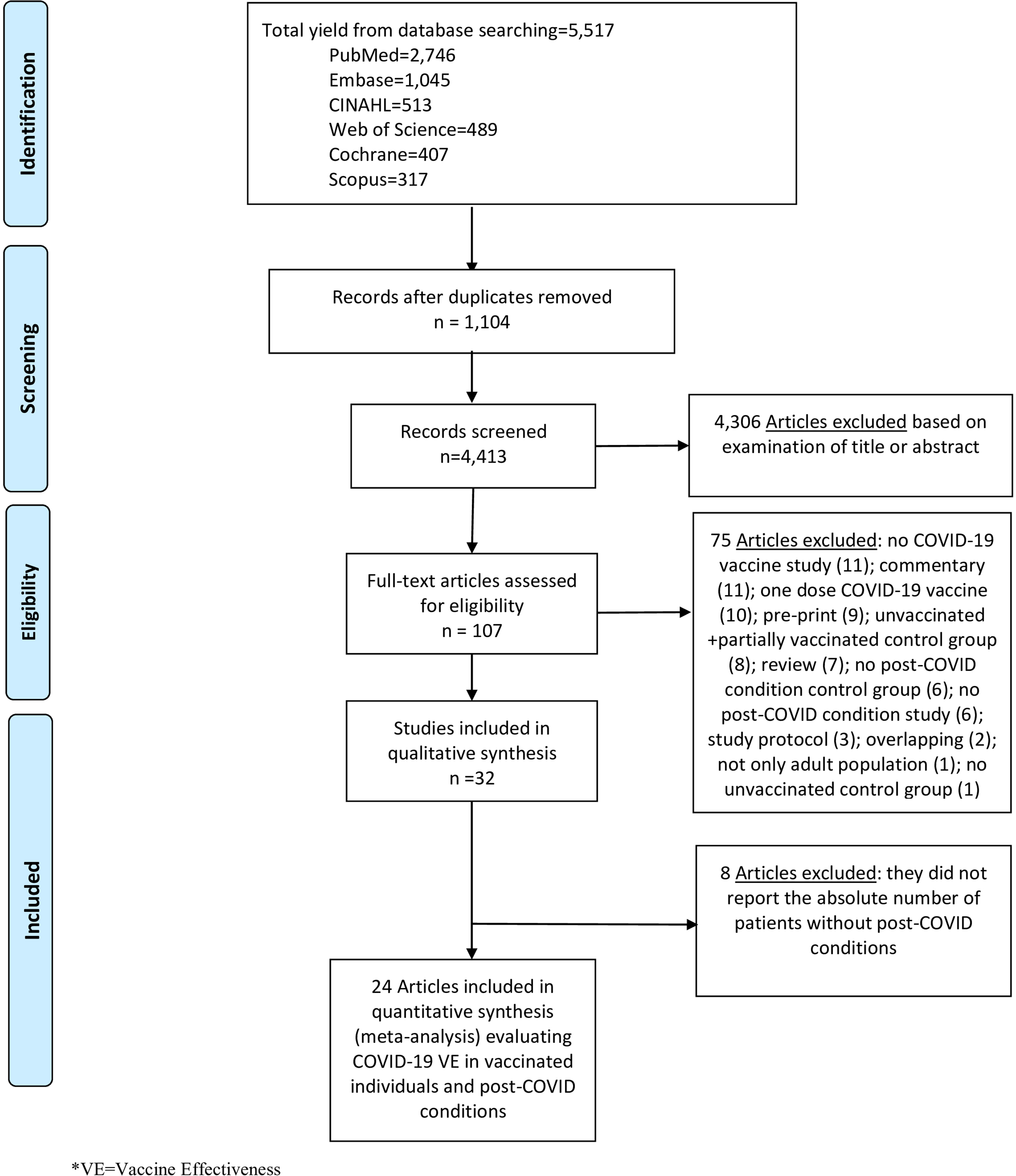
Figure 1. Literature search for articles on the COVID-19 vaccine effectiveness in post-COVID conditions.
Data abstraction and quality assessment
Titles and abstracts of all articles were screened to assess whether they met the inclusion criteria. Abstract screening was performed by one reviewer (ARM). Of ten independent reviewers (ARM, GYC, IP, JT, MA, MCG, MH, SH, TK, and VL), two independently abstracted data for each article using a standardized abstraction form. Reviewers resolved disagreements by consensus.
The reviewers abstracted data on study design, population and location, study period (months) and calendar time, demographic and characteristics of participants, and the types of COVID-19 vaccine if available. Post-COVID conditions were considered the primary outcome to calculate VE after at least two doses of a COVID-19 vaccine. Eleven corresponding authors were contacted for additional information, and four were able to provide additional information regarding the number of individuals with and without post-COVID conditions in both fully vaccinated and unvaccinated groups. Reference Mohammed, Nauman and Paul 4 – Reference Kahlert, Strahm and Güsewell 17 Risk of bias was assessed using the Downs and Black scale. Reference Downs and Black 18 Reviewers answered all original questions from this scale except for question #27 (a single item on the Power subscale scored 0–5), which was changed to a yes or no. Two authors performed component quality analysis independently, reviewed all inconsistent assessments, and resolved disagreements by consensus. Reference Alderson 19
Statistical analysis
To perform a meta-analysis of the extracted data, we calculated the pooled diagnostic odds ratio (DOR) for post-COVID conditions between fully vaccinated and unvaccinated individuals. Vaccine effectiveness was estimated as 100% x (1-DOR). We performed stratified analyses by the timing of the COVID-19 vaccine (i.e., those with COVID-19 vaccines before or after COVID-19 diagnosis, those with COVID-19 vaccines before COVID-19 diagnosis, those with COVID-19 vaccines after COVID-19 diagnosis, and those with COVID-19 vaccines before COVID-19 diagnosis during the Omicron variant era), and between those vaccinated with a first booster dose and unvaccinated individuals. We performed statistical analysis using R version 4.1.0 with mada package version 0.5.8. Reference Doebler and Sousa-Pinto 20 Analogous to the meta-analysis of the odds ratio methods for the DOR, an estimator of random-effects model following the approach of DerSimonian and Laird is provided by the mada package. Reference Doebler and Sousa-Pinto 20 For our meta-analysis of VE estimates against post-COVID conditions, we used a bivariate random-effects model, adopting a similar concept of performing the diagnostic accuracy. This enabled simultaneous pooling of sensitivity and specificity with mixed-effect linear modeling while allowing for the trade-off between them. Reference Reitsma, Glas, Rutjes, Scholten, Bossuyt and Zwinderman 21 , Reference Goto, Ohl, Schweizer and Perencevich 22 Heterogeneity between studies was evaluated with I 2 estimation and the Cochran Q statistic test. Publication bias was assessed using the Egger test with R version 4.1.0 with metafor package Reference Viechtbauer 23 .
Characteristics of included studies
Thirty-two studies met the inclusion criteria Reference Emecen, Keskin and Turunc 14 – Reference Kahlert, Strahm and Güsewell 17 , Reference Alghamdi, Alrashed, Jawhari and Abdel-Moneim 24 – Reference Zisis, Durieux, Mouchati, Perez and McComsey 51 and were included in the final review (Table 1 ). All studies were non-randomized Reference Emecen, Keskin and Turunc 14 – Reference Kahlert, Strahm and Güsewell 17 , Reference Alghamdi, Alrashed, Jawhari and Abdel-Moneim 24 – Reference Zisis, Durieux, Mouchati, Perez and McComsey 51 ; of these, fourteen were retrospective cohort studies, Reference Hernández-Aceituno, García-Hernández and Larumbe-Zabala 15 , Reference Al-Aly, Bowe and Xie 25 , Reference Ayoubkhani, Bosworth and King 29 – Reference Ballouz, Menges and Kaufmann 31 , Reference Hastie, Lowe and McAuley 35 , Reference Ioannou, Baraff and Fox 36 , Reference Meza-Torres, Delanerolle and Okusi 40 , Reference Pinato, Ferrante and Aguilar-Company 44 – Reference Selvaskandan, Nimmo and Savino 46 , Reference Tannous, Pan and Potter 48 , Reference Taquet, Dercon and Harrison 49 , Reference Zisis, Durieux, Mouchati, Perez and McComsey 51 nine were prospective cohort studies Reference Emecen, Keskin and Turunc 14 , Reference van der Maaden, Mutubuki and de Bruijn 16 , Reference Arjun, Singh and Pal 28 , Reference Brunvoll, Nygaard and Fagerland 32 , Reference Hajjaji, Lepoutre and Lakhdar 34 , Reference Jassat, Mudara and Vika 37 , Reference Kuodi, Gorelik and Zayyad 38 , Reference Mohr, Plumb and Harland 41 , Reference Thaweethai, Jolley and Karlson 50 , five were cross-sectional studies, Reference Kahlert, Strahm and Güsewell 17 , Reference Alghamdi, Alrashed, Jawhari and Abdel-Moneim 24 , Reference Nehme, Braillard and Chappuis 42 , Reference Perlis, Santillana and Ognyanova 43 , Reference Senjam, Balhara and Kumar 47 and four were case-control studies. Reference Antonelli, Penfold and Merino 26 , Reference Antonelli, Pujol, Spector, Ourselin and Steves 27 , Reference El Otmani, Nabili, Berrada, Bellakhdar, El Moutawakil and Abdoh Rafai 33 , Reference Marra, Sampaio and Ozahata 39 One of the cross-sectional studies was also within a prospective cohort study. Reference Kahlert, Strahm and Güsewell 17 More than half of these studies (22 out of 32) evaluated the Pfizer/BioNTech vaccine. Reference Emecen, Keskin and Turunc 14 – Reference Kahlert, Strahm and Güsewell 17 , Reference Alghamdi, Alrashed, Jawhari and Abdel-Moneim 24 – Reference Antonelli, Penfold and Merino 26 , Reference Ayoubkhani, Bosworth and King 29 – Reference Ballouz, Menges and Kaufmann 31 , Reference Ioannou, Baraff and Fox 36 – Reference Marra, Sampaio and Ozahata 39 , Reference Mohr, Plumb and Harland 41 – Reference Richard, Pollett and Fries 45 , Reference Tannous, Pan and Potter 48 – Reference Thaweethai, Jolley and Karlson 50 Sixteen analyzed the Moderna vaccine, Reference Hernández-Aceituno, García-Hernández and Larumbe-Zabala 15 – Reference Kahlert, Strahm and Güsewell 17 , Reference Al-Aly, Bowe and Xie 25 , Reference Antonelli, Penfold and Merino 26 , Reference Ayoubkhani, Bosworth and King 29 , Reference Ballouz, Menges and Kaufmann 31 , Reference Ioannou, Baraff and Fox 36 , Reference Mohr, Plumb and Harland 41 – Reference Richard, Pollett and Fries 45 , Reference Tannous, Pan and Potter 48 – Reference Thaweethai, Jolley and Karlson 50 twelve analyzed the Janssen vaccine, Reference Hernández-Aceituno, García-Hernández and Larumbe-Zabala 15 , Reference van der Maaden, Mutubuki and de Bruijn 16 , Reference Al-Aly, Bowe and Xie 25 , Reference Ballouz, Menges and Kaufmann 31 , Reference Jassat, Mudara and Vika 37 , Reference Marra, Sampaio and Ozahata 39 , Reference Perlis, Santillana and Ognyanova 43 – Reference Richard, Pollett and Fries 45 , Reference Tannous, Pan and Potter 48 – Reference Thaweethai, Jolley and Karlson 50 ten analyzed the AstraZeneca vaccine, Reference Hernández-Aceituno, García-Hernández and Larumbe-Zabala 15 , Reference van der Maaden, Mutubuki and de Bruijn 16 , Reference Alghamdi, Alrashed, Jawhari and Abdel-Moneim 24 , Reference Antonelli, Penfold and Merino 26 , Reference Arjun, Singh and Pal 28 , Reference Ayoubkhani, Bosworth and King 29 , Reference El Otmani, Nabili, Berrada, Bellakhdar, El Moutawakil and Abdoh Rafai 33 , Reference Marra, Sampaio and Ozahata 39 , Reference Pinato, Ferrante and Aguilar-Company 44 , Reference Tannous, Pan and Potter 48 two the CoronaVac vaccine, Reference Emecen, Keskin and Turunc 14 , Reference Marra, Sampaio and Ozahata 39 one the Covaxin vaccine, Reference Arjun, Singh and Pal 28 one the Sinopharm vaccine, Reference El Otmani, Nabili, Berrada, Bellakhdar, El Moutawakil and Abdoh Rafai 33 and one analyzed the Gamaleya vaccine. Reference Hernández-Aceituno, García-Hernández and Larumbe-Zabala 15 There were no published studies that evaluated post-COVID conditions as an outcome of bivalent COVID-19 vaccines.
Table 1. Summary of characteristics of studies included in the systematic literature review

D&B score, Downs and Black score; ICD-10, 10 th revision of the International Classification of Diseases; WHO, World Health Organization; NR, Not reported.
*[From Kuodi 2022 study] – At the time of data collection, very few individuals had received a third dose, and those who did were recorded as two doses.
One-quarter of the studies included in our review were conducted in the United States (8 studies). Reference Al-Aly, Bowe and Xie 25 , Reference Ioannou, Baraff and Fox 36 , Reference Mohr, Plumb and Harland 41 , Reference Perlis, Santillana and Ognyanova 43 , Reference Richard, Pollett and Fries 45 , Reference Tannous, Pan and Potter 48 , Reference Thaweethai, Jolley and Karlson 50 , Reference Zisis, Durieux, Mouchati, Perez and McComsey 51 Seven studies were performed in the United Kingdom, Reference Antonelli, Penfold and Merino 26 , Reference Antonelli, Pujol, Spector, Ourselin and Steves 27 , Reference Ayoubkhani, Bosworth and King 29 , Reference Meza-Torres, Delanerolle and Okusi 40 , Reference Pinato, Ferrante and Aguilar-Company 44 , Reference Selvaskandan, Nimmo and Savino 46 , Reference Taquet, Dercon and Harrison 49 three in Switzerland, Reference Kahlert, Strahm and Güsewell 17 , Reference Ballouz, Menges and Kaufmann 31 , Reference Nehme, Braillard and Chappuis 42 two in India, Reference Arjun, Singh and Pal 28 , Reference Senjam, Balhara and Kumar 47 and one of each was performed in Brazil, Reference Marra, Sampaio and Ozahata 39 France, Reference Hajjaji, Lepoutre and Lakhdar 34 Israel, Reference Kuodi, Gorelik and Zayyad 38 Italy, Reference Azzolini, Levi and Sarti 30 Morocco, Reference El Otmani, Nabili, Berrada, Bellakhdar, El Moutawakil and Abdoh Rafai 33 Netherlands, Reference van der Maaden, Mutubuki and de Bruijn 16 Norway, Reference Brunvoll, Nygaard and Fagerland 32 Saudi Arabia, Reference Alghamdi, Alrashed, Jawhari and Abdel-Moneim 24 Scotland, Reference Hastie, Lowe and McAuley 35 South Africa, Reference Jassat, Mudara and Vika 37 Spain, Reference Hernández-Aceituno, García-Hernández and Larumbe-Zabala 15 and Turkey. Reference Emecen, Keskin and Turunc 14 All studies were performed between February 2020 and April 2023. Reference Emecen, Keskin and Turunc 14 – Reference Kahlert, Strahm and Güsewell 17 , Reference Alghamdi, Alrashed, Jawhari and Abdel-Moneim 24 – Reference Zisis, Durieux, Mouchati, Perez and McComsey 51 The study duration varied from 1 to 29 months.
In our qualitative analysis, thirty-two studies, including 775,931 individuals, evaluated the effect of vaccination among fully vaccinated individuals and unvaccinated individuals on post-COVID conditions. Reference Emecen, Keskin and Turunc 14 – Reference Kahlert, Strahm and Güsewell 17 , Reference Alghamdi, Alrashed, Jawhari and Abdel-Moneim 24 – Reference Zisis, Durieux, Mouchati, Perez and McComsey 51 Twenty studies evaluated VE in individuals vaccinated only before COVID-19 infection, Reference Emecen, Keskin and Turunc 14 – Reference van der Maaden, Mutubuki and de Bruijn 16 , Reference Al-Aly, Bowe and Xie 25 – Reference Antonelli, Pujol, Spector, Ourselin and Steves 27 , Reference Ayoubkhani, Bosworth and King 29 – Reference Ballouz, Menges and Kaufmann 31 , Reference Ioannou, Baraff and Fox 36 , Reference Kuodi, Gorelik and Zayyad 38 , Reference Marra, Sampaio and Ozahata 39 , Reference Mohr, Plumb and Harland 41 , Reference Perlis, Santillana and Ognyanova 43 , Reference Pinato, Ferrante and Aguilar-Company 44 , Reference Senjam, Balhara and Kumar 47 – Reference Zisis, Durieux, Mouchati, Perez and McComsey 51 three studies evaluated VE for post-COVID conditions among those who were vaccinated after COVID-19 infection, Reference Brunvoll, Nygaard and Fagerland 32 , Reference El Otmani, Nabili, Berrada, Bellakhdar, El Moutawakil and Abdoh Rafai 33 , Reference Nehme, Braillard and Chappuis 42 four studies evaluated VE among those who were vaccinated before and after COVID-19 infection, Reference Kahlert, Strahm and Güsewell 17 , Reference Jassat, Mudara and Vika 37 , Reference Meza-Torres, Delanerolle and Okusi 40 , Reference Richard, Pollett and Fries 45 and five studies evaluated VE but did not specify the timing of the vaccine Reference Alghamdi, Alrashed, Jawhari and Abdel-Moneim 24 , Reference Arjun, Singh and Pal 28 , Reference Hajjaji, Lepoutre and Lakhdar 34 , Reference Hastie, Lowe and McAuley 35 , Reference Selvaskandan, Nimmo and Savino 46 . All 32 studies evaluated VE with at least two doses of a COVID-19 vaccine. Reference Emecen, Keskin and Turunc 14 – Reference van der Maaden, Mutubuki and de Bruijn 16 , Reference Viechtbauer 23 – Reference Zisis, Durieux, Mouchati, Perez and McComsey 51 Three studies evaluated vaccinated individuals with three doses of vaccine. Reference Azzolini, Levi and Sarti 30 , Reference Ballouz, Menges and Kaufmann 31 , Reference Marra, Sampaio and Ozahata 39 While eight of 32 studies reported data during Omicron variant era, Reference Hernández-Aceituno, García-Hernández and Larumbe-Zabala 15 , Reference Kahlert, Strahm and Güsewell 17 , Reference Antonelli, Pujol, Spector, Ourselin and Steves 27 , Reference Azzolini, Levi and Sarti 30 , Reference Ballouz, Menges and Kaufmann 31 , Reference Marra, Sampaio and Ozahata 39 , Reference Perlis, Santillana and Ognyanova 43 , Reference Thaweethai, Jolley and Karlson 50 24 studies took place before Omicron variant era. Reference Emecen, Keskin and Turunc 14 , Reference van der Maaden, Mutubuki and de Bruijn 16 , Reference Alghamdi, Alrashed, Jawhari and Abdel-Moneim 24 – Reference Antonelli, Penfold and Merino 26 , Reference Arjun, Singh and Pal 28 , Reference Ayoubkhani, Bosworth and King 29 , Reference Brunvoll, Nygaard and Fagerland 32 – Reference Kuodi, Gorelik and Zayyad 38 , Reference Meza-Torres, Delanerolle and Okusi 40 – Reference Nehme, Braillard and Chappuis 42 , Reference Pinato, Ferrante and Aguilar-Company 44 – Reference Taquet, Dercon and Harrison 49 , Reference Zisis, Durieux, Mouchati, Perez and McComsey 51
Each study adopted different definitions for post-COVID conditions (Table 1 ). Post-COVID conditions were defined as symptoms lasting more than 4 weeks in thirteen studies, Reference Hernández-Aceituno, García-Hernández and Larumbe-Zabala 15 , Reference Kahlert, Strahm and Güsewell 17 , Reference Al-Aly, Bowe and Xie 25 – Reference Arjun, Singh and Pal 28 , Reference Azzolini, Levi and Sarti 30 , Reference Marra, Sampaio and Ozahata 39 , Reference Meza-Torres, Delanerolle and Okusi 40 , Reference Richard, Pollett and Fries 45 , Reference Senjam, Balhara and Kumar 47 , Reference Tannous, Pan and Potter 48 , Reference Zisis, Durieux, Mouchati, Perez and McComsey 51 more than 12 weeks in nine studies, Reference van der Maaden, Mutubuki and de Bruijn 16 , Reference Ayoubkhani, Bosworth and King 29 , Reference Brunvoll, Nygaard and Fagerland 32 , Reference El Otmani, Nabili, Berrada, Bellakhdar, El Moutawakil and Abdoh Rafai 33 , Reference Hastie, Lowe and McAuley 35 – Reference Kuodi, Gorelik and Zayyad 38 , Reference Selvaskandan, Nimmo and Savino 46 and more than 6 months in seven studies. Reference Emecen, Keskin and Turunc 14 , Reference Alghamdi, Alrashed, Jawhari and Abdel-Moneim 24 , Reference Ballouz, Menges and Kaufmann 31 , Reference Hajjaji, Lepoutre and Lakhdar 34 , Reference Nehme, Braillard and Chappuis 42 , Reference Taquet, Dercon and Harrison 49 , Reference Thaweethai, Jolley and Karlson 50 . One study defined symptoms as more than 6 weeks, Reference Mohr, Plumb and Harland 41 one study defined symptoms as more than 8 weeks as a post-COVID condition Reference Perlis, Santillana and Ognyanova 43 , and one study did not report the duration of symptoms. Reference Pinato, Ferrante and Aguilar-Company 44 All studies used at least one of the common symptoms (details shown in Table 1 ) to make a diagnosis of a post-COVID condition. Reference Emecen, Keskin and Turunc 14 – Reference van der Maaden, Mutubuki and de Bruijn 16 , Reference Viechtbauer 23 – Reference Zisis, Durieux, Mouchati, Perez and McComsey 51 Nearly three-quarters of the included studies (22 studies) showed that vaccination was protective against post-COVID symptoms. Reference Emecen, Keskin and Turunc 14 , Reference van der Maaden, Mutubuki and de Bruijn 16 , Reference Al-Aly, Bowe and Xie 25 – Reference Antonelli, Pujol, Spector, Ourselin and Steves 27 , Reference Ayoubkhani, Bosworth and King 29 – Reference Brunvoll, Nygaard and Fagerland 32 , Reference Hastie, Lowe and McAuley 35 , Reference Ioannou, Baraff and Fox 36 , Reference Kuodi, Gorelik and Zayyad 38 , Reference Marra, Sampaio and Ozahata 39 , Reference Mohr, Plumb and Harland 41 – Reference Richard, Pollett and Fries 45 , Reference Senjam, Balhara and Kumar 47 , Reference Tannous, Pan and Potter 48 , Reference Thaweethai, Jolley and Karlson 50 , Reference Zisis, Durieux, Mouchati, Perez and McComsey 51 Nine studies did not report any benefit of COVID-19 vaccination in reducing post-COVID condition symptoms, Reference Hernández-Aceituno, García-Hernández and Larumbe-Zabala 15 , Reference Kahlert, Strahm and Güsewell 17 , Reference Alghamdi, Alrashed, Jawhari and Abdel-Moneim 24 , Reference Arjun, Singh and Pal 28 , Reference El Otmani, Nabili, Berrada, Bellakhdar, El Moutawakil and Abdoh Rafai 33 , Reference Hajjaji, Lepoutre and Lakhdar 34 , Reference Jassat, Mudara and Vika 37 , Reference Meza-Torres, Delanerolle and Okusi 40 , Reference Taquet, Dercon and Harrison 49 and one study did not report any statistical analysis of effectiveness. Reference Selvaskandan, Nimmo and Savino 46
Overall, twenty-four studies, including 620,221 individuals, evaluated post-COVID conditions among those who received at least two doses of COVID-19 vaccine before or after COVID-19 infection (Table 2 ) and were included in the meta-analysis. Reference Emecen, Keskin and Turunc 14 – Reference Kahlert, Strahm and Güsewell 17 , Reference Ayoubkhani, Bosworth and King 29 – Reference Ballouz, Menges and Kaufmann 31 , Reference El Otmani, Nabili, Berrada, Bellakhdar, El Moutawakil and Abdoh Rafai 33 , Reference Hajjaji, Lepoutre and Lakhdar 34 , Reference Ioannou, Baraff and Fox 36 – Reference Richard, Pollett and Fries 45 , Reference Senjam, Balhara and Kumar 47 – Reference Zisis, Durieux, Mouchati, Perez and McComsey 51 The pooled prevalence of post-COVID conditions was 11.8% among those who were unvaccinated and 5.3% among those who received at least two doses. The pooled DOR for post-COVID conditions among individuals vaccinated with two doses was 0.680 (95% CI: 0.523–0.885) with an estimated VE of 32.0% (95% CI: 11.5%–47.7%) (Figure 2 ). Of the twenty-four studies, twenty-one evaluated post-COVID conditions in individuals who received the COVID-19 vaccine before infection. Reference Emecen, Keskin and Turunc 14 – Reference Kahlert, Strahm and Güsewell 17 , Reference Ayoubkhani, Bosworth and King 29 – Reference Ballouz, Menges and Kaufmann 31 , Reference Ioannou, Baraff and Fox 36 – Reference Mohr, Plumb and Harland 41 , Reference Perlis, Santillana and Ognyanova 43 – Reference Richard, Pollett and Fries 45 , Reference Senjam, Balhara and Kumar 47 – Reference Zisis, Durieux, Mouchati, Perez and McComsey 51 The DOR was 0.631 (95% CI: 0.518–0.769) (Supplementary Appendix 2 ), and the estimated VE was 36.9% (95% CI: 23.1%–48.2%) (Table 2 ). There were five papers that evaluated post-COVID conditions for those who received the vaccine after infection. Reference Kahlert, Strahm and Güsewell 17 , Reference El Otmani, Nabili, Berrada, Bellakhdar, El Moutawakil and Abdoh Rafai 33 , Reference Jassat, Mudara and Vika 37 , Reference Meza-Torres, Delanerolle and Okusi 40 , Reference Nehme, Braillard and Chappuis 42 The DOR was 1.303 (95% CI: 0.890–1.907) (Supplementary Appendix 3 ), and it was not possible to estimate VE because it did not prevent post-COVID condition (Table 2 ). There were seven studies that evaluated post-COVID conditions for those who received the COVID-19 vaccine only before infection during the Omicron variant era. Reference Hernández-Aceituno, García-Hernández and Larumbe-Zabala 15 , Reference Kahlert, Strahm and Güsewell 17 , Reference Azzolini, Levi and Sarti 30 , Reference Ballouz, Menges and Kaufmann 31 , Reference Marra, Sampaio and Ozahata 39 , Reference Perlis, Santillana and Ognyanova 43 , Reference Thaweethai, Jolley and Karlson 50 The DOR was 0.684 (95% CI: 0.542–0.862) (Supplementary Appendix 4 ), and the estimated VE was 31.6% (95% CI: 13.8%–45.8%) (Table 2 ). There were three studies that evaluated post-COVID conditions for those who received the additional booster dose vaccine only before infection. Reference Azzolini, Levi and Sarti 30 , Reference Ballouz, Menges and Kaufmann 31 , Reference Marra, Sampaio and Ozahata 39 The DOR was 0.313 (95% CI: 0.278–0.353) (Supplementary Appendix 5 ), and the estimated VE was 68.7% (95% CI: 64.7%–72.2%) (Table 2 ). Because there were no studies evaluating post-COVID conditions for those who received two doses of each specific type of COVID-19 vaccine (mRNA or viral vector or inactivated viral vaccine), we did not perform a stratified analysis. The results of meta-analyses were homogeneous for studies evaluating post-COVID conditions in individuals who received the COVID-19 vaccine before or after COVID-19 infection (heterogeneity p = 0.89, I 2 = 0%), and homogenous for studies evaluating post-COVID conditions in individuals receiving vaccine before infection (heterogeneity p = 0.62, I 2 = 0%), and also homogenous for studies evaluating post-COVID conditions in individuals receiving vaccine after infection (heterogeneity p = 0.29, I 2 = 19.9%), respectively. There was no evidence for publication bias among the 24 studies included in the meta-analysis Reference Emecen, Keskin and Turunc 14 – Reference Kahlert, Strahm and Güsewell 17 , Reference Ayoubkhani, Bosworth and King 29 – Reference Ballouz, Menges and Kaufmann 31 , Reference El Otmani, Nabili, Berrada, Bellakhdar, El Moutawakil and Abdoh Rafai 33 , Reference Hajjaji, Lepoutre and Lakhdar 34 , Reference Ioannou, Baraff and Fox 36 – Reference Richard, Pollett and Fries 45 , Reference Senjam, Balhara and Kumar 47 – Reference Zisis, Durieux, Mouchati, Perez and McComsey 51 ( p = 0.71).
Table 2. Subset analyses evaluating COVID-19 vaccine effectiveness among post-COVID conditions in individuals who received COVID-19 vaccine before or after COVID-19 infection

CI, Confidence Interval.
*Vaccine Effectiveness was estimated as 100% × (1-DOR).
**There is overlapping (VE for post-COVID condition who got COVID-19 vaccine before and after COVID-19 infection) in three of the studies [Jassat 2023, Kahlert 2023 and Meza-Torres 2022]. Reference Kahlert, Strahm and Güsewell 17 , Reference Jassat, Mudara and Vika 37 , Reference Meza-Torres, Delanerolle and Okusi 40
***Imbalance of studies: one of the five studies with 390,563 participants [Mezza-Torres 2022] Reference Meza-Torres, Delanerolle and Okusi 40 , representing 98.6% of the total participants from the COVID-19 vaccine studies after COVID-19 infection.

Figure 2. Forest plot of COVID-19 vaccine effectiveness among post-COVID conditions in individuals who received COVID-19 vaccine before or after COVID-19 infection. Diagnostic odds ratios (DOR) were determined with the DerSimonian and Laird random-effects method. Abbreviation: CI, confidence interval.
Regarding the quality assessment scores of the 32 included studies, more than three-quarters of the studies (28 studies) were considered good quality (19–23 of 28 possible points) as per the Downs and Black quality tool. Reference Emecen, Keskin and Turunc 14 – Reference Kahlert, Strahm and Güsewell 17 , Reference Al-Aly, Bowe and Xie 25 – Reference Brunvoll, Nygaard and Fagerland 32 , Reference Hajjaji, Lepoutre and Lakhdar 34 – Reference Mohr, Plumb and Harland 41 , Reference Perlis, Santillana and Ognyanova 43 – Reference Richard, Pollett and Fries 45 , Reference Senjam, Balhara and Kumar 47 – Reference Zisis, Durieux, Mouchati, Perez and McComsey 51 Three studies were considered fair (14–18 points), Reference Alghamdi, Alrashed, Jawhari and Abdel-Moneim 24 , Reference El Otmani, Nabili, Berrada, Bellakhdar, El Moutawakil and Abdoh Rafai 33 , Reference Nehme, Braillard and Chappuis 42 and one study was considered to be of poor quality (≤13 points). Reference Selvaskandan, Nimmo and Savino 46
This systematic literature review and meta-analysis suggest that the pooled prevalence of post-COVID conditions was 11.8% among those unvaccinated and 5.3% among those individuals fully vaccinated. The VE of fully vaccinated individuals against post-COVID conditions was not high at approximately 30%; however, the prevalence of post-COVID conditions was lower with a statistically significant difference in fully vaccinated individuals. The stratified analysis showed a significant reduction in post-COVID conditions during the Omicron variant era, and the vaccine should be offered to unvaccinated individuals who have not had COVID-19 yet. Given VE against post-COVID conditions increased with an additional dose of the COVID-19 vaccine, individuals who have not received a booster should be encouraged to get one. There was no protection against post-COVID conditions observed if COVID-19 vaccines were given after COVID-19 infection.
With the ongoing COVID-19 pandemic, a considerable proportion of individuals who have recovered from COVID-19 infection have long-term symptoms involving multiple organs and systems. Reference Huang, Li and Gu 52 , Reference Groff, Sun and Ssentongo 53 The percentage of individuals who have had COVID and reported post-COVID condition symptoms declined from 19% in June 2022 to 11% in January 2023 8 . A systematic review including 57 studies reported that more than half of COVID-19 survivors experienced persistent post-COVID condition symptoms 6 months after recovery. Reference Groff, Sun and Ssentongo 53 The present systematic review showed a relatively low prevalence of post-COVID conditions; this is likely because most individuals included in our studies were non-hospitalized individuals and we are presently in the Omicron variant era. Reference Kahlert, Strahm and Güsewell 17 , Reference Azzolini, Levi and Sarti 30 , Reference Ballouz, Menges and Kaufmann 31 , Reference Jassat, Mudara and Vika 37 , Reference Marra, Sampaio and Ozahata 39 , Reference Thaweethai, Jolley and Karlson 50 , Reference Perlis, Santillana and Ognyanova 54 Previous studies suggested that the Delta and Omicron variants caused less systemic inflammatory processes, severe illness, or death, resulting in less severe long COVID symptoms than the wild-type variant (Wuhan). Reference Antonelli, Pujol, Spector, Ourselin and Steves 27 , Reference Fernández-de-las-Peñas, Cancela-Cilleruelo and Rodríguez-Jiménez 55
Currently, there are no standardized criteria for diagnosing and categorizing post-COVID conditions. Another recent systematic literature review found substantial heterogeneity in defining post-COVID conditions in the published studies, with almost two-thirds (65%) not complying with the definitions from the CDC, the UK National Institute for Health and Care Excellence (NICE), or WHO (World Health Organization). Reference Chaichana, Man and Chen 56 This variability in definitions across studies can affect the comparability and generalizability of findings. The studies included in our systematic review used a variety of symptoms and durations to make a diagnosis of post-COVID conditions. The most common symptoms described were fatigue or muscle weakness, persistent muscle pain, anxiety, memory problems, sleep problems, and shortness of breath. Reference Huang, Li and Gu 52 , Reference Groff, Sun and Ssentongo 53 , Reference Chen, Haupert, Zimmermann, Shi, Fritsche and Mukherjee 57 Another study reported that, regardless of the initial disease severity, COVID-19 survivors had longitudinal improvements in physical and mental health, with most returning to their original work within 2 years. Reference Huang, Li and Gu 52 However, survivors had a remarkably lower health status than the general population at 2 years. Reference Huang, Li and Gu 52 The CDC reports that individuals with post-COVID conditions may experience many symptoms that can last more than 4 weeks or even months after infection and the symptoms may initially resolve but subsequently recur. 7 This differs from the WHO definition where post-COVID conditions are defined to occur in individuals who have a history of probable or confirmed SARS-CoV-2 infection; usually within 3 months from the onset of COVID-19, with symptoms and effects that last for at least 2 months. 58 A clearer and more standardized definition of post-COVID conditions is needed for researchers to investigate the true prevalence among those who are vaccinated and unvaccinated, and to evaluate the VE against post-COVID conditions.
While our previous meta-analysis on the same topic, but with a single vaccine dose instead of two doses, suggested that COVID-19 vaccines might effectively prevent post-COVID conditions even if administered after a COVID-19 infection, Reference Marra, Kobayashi and Suzuki 9 the present meta-analysis did not demonstrate any protective effect when vaccines were given after COVID-19 infection. There are a few potential reasons for this discrepancy. Our previous meta-analysis Reference Marra, Kobayashi and Suzuki 9 included three papers, including two preprint papers. However, none of these three papers met the inclusion criteria for the present study (two preprint papers and one paper focusing on a single vaccine). Instead, the present study included five new papers, one of which reported protection while the other four did not. It is important to interpret this stratified analysis cautiously, as one of the four studies without protection had a considerably larger sample size of over 390,000 individuals, accounting for more than 98% of the total sample size in the stratified analysis. Reference Meza-Torres, Delanerolle and Okusi 40 Further studies will be necessary to investigate the effect of COVID-19 vaccines against post-COVID conditions when administered after a COVID-19 infection.
Our study had several limitations. First, the majority of the included studies in the meta-analysis investigating the VE in preventing post-COVID conditions employ different observational study designs, including cohort studies, and case-control studies. Reference Emecen, Keskin and Turunc 14 , Reference Kahlert, Strahm and Güsewell 17 , Reference Ayoubkhani, Bosworth and King 29 – Reference Ballouz, Menges and Kaufmann 31 , Reference El Otmani, Nabili, Berrada, Bellakhdar, El Moutawakil and Abdoh Rafai 33 , Reference Hajjaji, Lepoutre and Lakhdar 34 , Reference Ioannou, Baraff and Fox 36 – Reference Nehme, Braillard and Chappuis 42 , Reference Pinato, Ferrante and Aguilar-Company 44 , Reference Richard, Pollett and Fries 45 , Reference Senjam, Balhara and Kumar 47 – Reference Zisis, Durieux, Mouchati, Perez and McComsey 51 , Reference Perlis, Santillana and Ognyanova 54 Second, features such as age, underlying health conditions, immunosuppression status, and prior COVID infection history can influence both VE and the likelihood of developing post-COVID conditions. Controlling these confounding features can be challenging in observational studies, and residual confounding factors may impact the accuracy of the estimates. Third, studies on VE for post-COVID conditions may focus on specific populations (e.g., hospitalized individuals), or geographical areas, which may limit the generalizability of the findings to other settings or populations. Fourth, VE against post-COVID conditions may change over time due to the emergence of new variants, waning immunity, or the need for additional booster doses. Understanding the dynamics of VE and the potential impact of these time-dependent effects is an ongoing area of research. Fifth, we could not find any studies that evaluated the impact of a second booster dose or bivalent vaccines on VE against post-COVID conditions. Additionally, since the definition of post-COVID conditions varies significantly over the included studies, overdiagnosis and misdiagnosis could be present. Lastly, the abstract screening was performed by one reviewer (ARM), while the review of articles was conducted independently by two individuals.
In conclusion, receiving two doses of the COVID-19 vaccine prior to COVID-19 infection significantly reduces the risk of developing post-COVID conditions compared to those who are unvaccinated during the study period, including the Omicron variant era. Vaccine effectiveness against post-COVID conditions was higher when a third dose was administered. However, no protection against post-COVID conditions was observed with vaccinations given after a person had already contracted COVID-19. More observational studies are needed to evaluate bivalent COVID-19 vaccines, vaccination after COVID-19 infection, VE of a second booster dose, VE of mixing COVID-19 vaccines, and genomic surveillance for better understanding of VE against post-COVID conditions. A more standardized definition of post-COVID conditions is still needed both for research and clinical purposes.
The supplementary material for this article can be found at https://doi.org/10.1017/ash.2023.447
Acknowledgments
We thank Jennifer Deberg, MLS, from the Hardin Library for the Health Sciences, University of Iowa Libraries, for assistance with the search methods.
This study was not funded.
All authors report no conflict of interest relevant to this article.
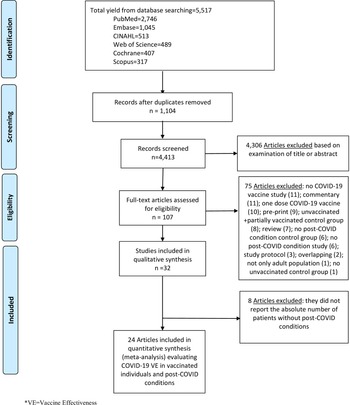
Marra et al. supplementary material

This article has been cited by the following publications. This list is generated based on data provided by Crossref .
- Google Scholar
View all Google Scholar citations for this article.
Save article to Kindle
To save this article to your Kindle, first ensure [email protected] is added to your Approved Personal Document E-mail List under your Personal Document Settings on the Manage Your Content and Devices page of your Amazon account. Then enter the ‘name’ part of your Kindle email address below. Find out more about saving to your Kindle .
Note you can select to save to either the @free.kindle.com or @kindle.com variations. ‘@free.kindle.com’ emails are free but can only be saved to your device when it is connected to wi-fi. ‘@kindle.com’ emails can be delivered even when you are not connected to wi-fi, but note that service fees apply.
Find out more about the Kindle Personal Document Service.
- Volume 3, Issue 1
- Alexandre R. Marra (a1) (a2) (a3) , Takaaki Kobayashi (a1) , Gustavo Yano Callado (a2) , Isabele Pardo (a2) , Maria Celidonio Gutfreund (a2) , Mariana Kim Hsieh (a2) , Vivian Lin (a2) , Mohammed Alsuhaibani (a4) , Shinya Hasegawa (a1) , Joseph Tholany (a1) , Eli N. Perencevich (a1) (a3) , Jorge L. Salinas (a5) , Michael B. Edmond (a6) and Luiz Vicente Rizzo (a2)
- DOI: https://doi.org/10.1017/ash.2023.447
Save article to Dropbox
To save this article to your Dropbox account, please select one or more formats and confirm that you agree to abide by our usage policies. If this is the first time you used this feature, you will be asked to authorise Cambridge Core to connect with your Dropbox account. Find out more about saving content to Dropbox .
Save article to Google Drive
To save this article to your Google Drive account, please select one or more formats and confirm that you agree to abide by our usage policies. If this is the first time you used this feature, you will be asked to authorise Cambridge Core to connect with your Google Drive account. Find out more about saving content to Google Drive .
Reply to: Submit a response
- No HTML tags allowed - Web page URLs will display as text only - Lines and paragraphs break automatically - Attachments, images or tables are not permitted
Your details
Your email address will be used in order to notify you when your comment has been reviewed by the moderator and in case the author(s) of the article or the moderator need to contact you directly.
You have entered the maximum number of contributors
Conflicting interests.
Please list any fees and grants from, employment by, consultancy for, shared ownership in or any close relationship with, at any time over the preceding 36 months, any organisation whose interests may be affected by the publication of the response. Please also list any non-financial associations or interests (personal, professional, political, institutional, religious or other) that a reasonable reader would want to know about in relation to the submitted work. This pertains to all the authors of the piece, their spouses or partners.
Impossible? Let’s see.
Whether we're shaping the future of sustainability, or optimizing algorithms, or even exploring epidemiological studies, Google Research strives to continuously progress science, advance society, and improve the lives of billions of people.

Advancing the state of the art
Our teams advance the state of the art through research, systems engineering, and collaboration across Google. We publish hundreds of research papers each year across a wide range of domains, sharing our latest developments in order to collaboratively progress computing and science.
Learn more about our philosophy.
Watch the film
Link to Youtube Video
Read the latest

JUNE 17 - 21 · CONFERENCES & EVENTS
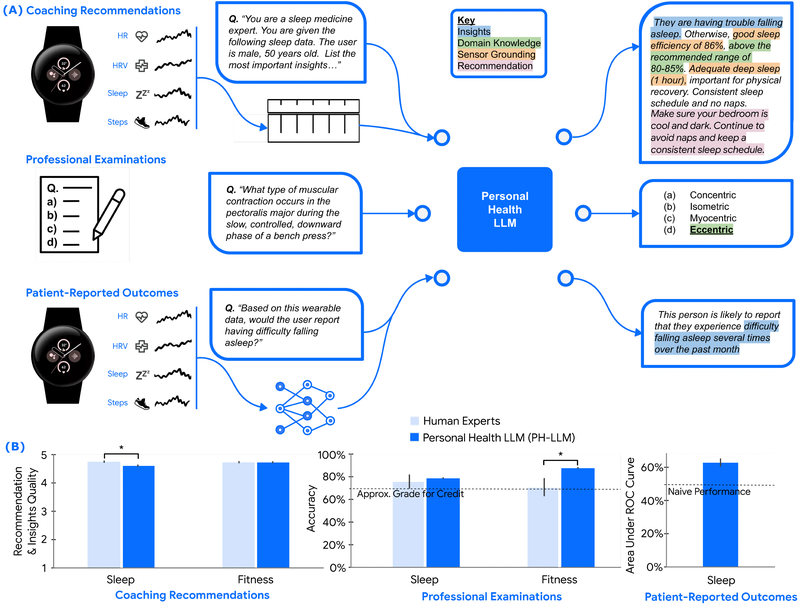
JUNE 11 · BLOG
JUNE 5 · BLOG

JUNE 4 · BLOG
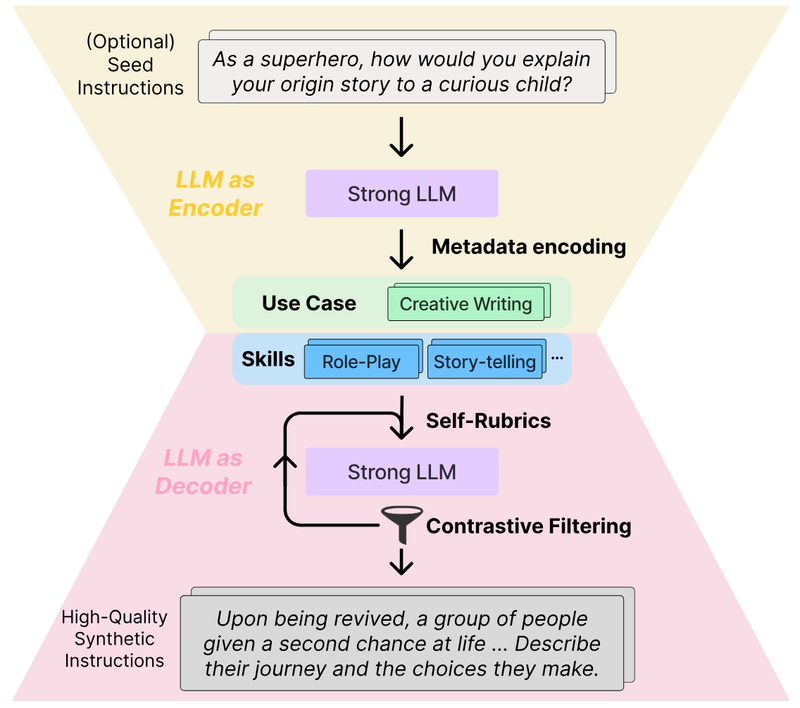
MAY 30 · BLOG
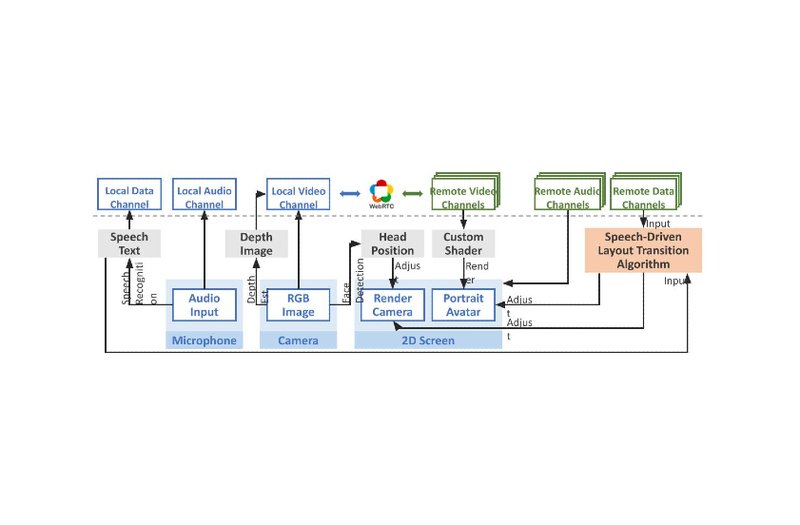
Our research drives real-world change
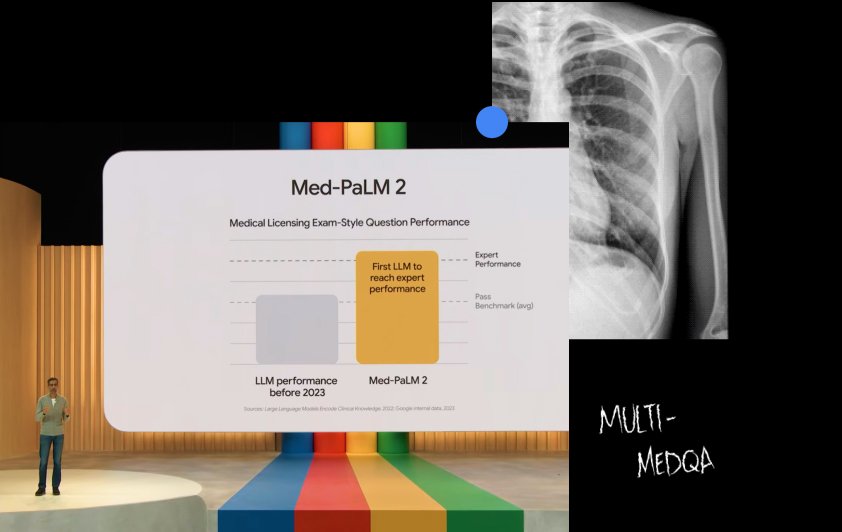
Improving our LLM designed for the medical domain
- Large language models encode clinical knowledge Publication
- Towards Expert-Level Medical Question Answering with Large Language Models Publication
- Our latest health AI research updates Article
- Med-PaLM 2, our expert-level medical LLM Video
Project Contrails

A cost-effective and scalable way AI is helping to mitigate aviation’s climate impact
- A human-labeled Landsat-8 contrails dataset Dataset
- Can Google AI make flying more sustainable? Video
- Estimates of broadband upwelling irradiance fromm GOES-16 ABI Publication
- How AI is helping airlines mitigate the climate impact of contrails Blog
See our impact across other projects

Open Buildings

Project Relate

Flood Forecasting
We work across domains
Our vast breadth of work covers AI/ML foundations, responsible human-centric technology, science & societal impact, computing paradigms, and algorithms & optimization. Our research teams impact technology used by people all over the world.
One research paper started it all
The research we do today becomes the Google of the future. Google itself began with a research paper, published in 1998, and was the foundation of Google Search. Our ongoing research over the past 25 years has transformed not only the company, but how people are able to interact with the world and its information.
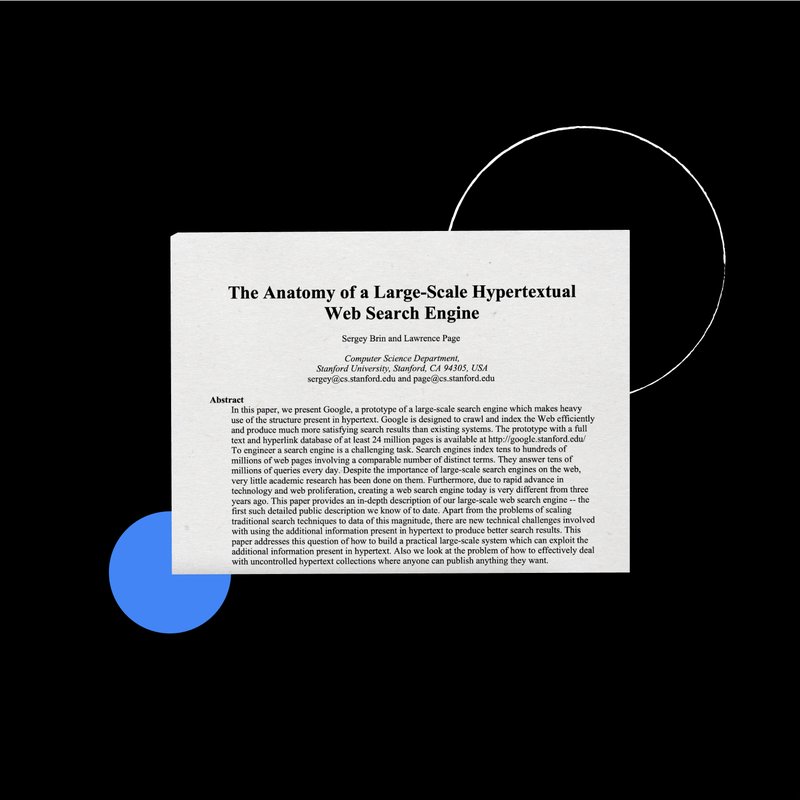
Responsible research is at the heart of what we do
The impact we create from our research has the potential to reach billions of people. That's why everything we do is guided by methodology that is grounded in responsible practices and thorough consideration.

Help us shape the future

We've been working alongside the academic research community since day one. Explore the ways that we collaborate and provide resources and support through a variety of student and faculty programs.

From Accra to Zürich, to our home base in Mountain View, we’re looking for talented scientists, engineers, interns, and more to join our teams not only at Google Research but all research projects across Google.
Explore our other teams and product areas
Google Cloud
Google DeepMind
LABS.GOOGLE

- Latest news
- UCL in the media
- Services for media
- Student news
- Tell us your story

Analysis: The Atlantic Gulf Stream was unexpectedly strong during the last ice age
11 July 2024
Writing in The Conversation, Professors Mark Maslin, David Thornalley and Dr Jack Wharton's (UCL Geography) new research has found the Gulf Stream, which carries warm water northwards through the Atlantic, was stronger and deeper 20,000 years ago than it is today.

Twenty thousand years ago the world was locked into a great ice age . Ice sheets two miles thick covered much of North America, Scandinavia and the British Isles.
Greenhouse gas concentrations were much lower, the world was 6°C colder, and because of all the water trapped in ice-sheets, the sea was at least 120 metres lower, exposing land that is submerged today. It would have been possible to walk from France to London via Doggerland or from Russia to Alaska through Beringia .
But our research, now published in Nature , has uncovered at least one surprise in the ice age climate: the Gulf Stream, which carries warm water northwards through the Atlantic, was stronger and deeper than it is today.
This research came about because as paleoceanographers (scientists who study oceans in the past), we wanted to understand how the oceans behaved during the last ice age to provide insights into how climate change might alter things in future.
Warm water – from Mexico to Norway
Today, warm salty water from the Gulf of Mexico flows northward as part of the Gulf Stream. As part of it flows past Europe it gives off lots of heat keeping the climate of western Europe very mild .
Then, as the surface water passes north of Iceland, it loses enough heat to increase its density, causing it to sink and form deepwater. This process initiates the global deepwater conveyor belt, which connects all the world’s oceans, slowly moving heat around the planet at depths greater than one mile below the surface.
Scientists previously thought the Atlantic meridional overturning circulation – a complex system of deep and surface ocean currents, including the Gulf Stream – was weaker during extreme cold periods such as the last ice age. In theory, more sea ice in the Arctic would have reduced the amount of water sinking from the surface into the deep ocean, slowing down the global deepwater conveyor belt.
However, our new study reveals that the Gulf Stream was actually much stronger (and deeper) during the last ice age. This is despite the prevailing cold glacial climate and the presence of enormous ice sheets around the northern parts of the Atlantic.
In fact, our research suggests that the glacial climate itself was responsible for driving a stronger Gulf Stream. In particular, the ice age was characterised by much stronger winds over parts of the North Atlantic, which would have driven a stronger Gulf Stream. Therefore, although the amount of water sinking from the surface into the deep ocean was reduced, the Gulf Stream was stronger and still transporting lots of heat northwards, albeit not as far as today.
Reconstructing past ocean circulation
Since we don’t have any data from weather buoys or satellites, we instead reconstructed how the ocean would have circulated in the last ice age using proxy evidence preserved in marine sediment cores, which are long tubes of mud from the bottom of the ocean.
The cores we used contained mud that had been building up on the seafloor for the past 25,000 years and were retrieved from multiple locations along the US east coast using research vessels from Woods Hole Oceanographic Institution in Massachusetts, where some of our team are based.
To determine the Gulf Stream’s strength during the ice age, we measured the size of sediment grains within the mud, with larger grains indicating faster flow and vice versa.
From the same mud, we also measured the shell chemistry of tiny single-celled organisms called foraminifera. By comparing data from a range of depths at multiple sites in the Northwest Atlantic, we were able to identify the boundary between those foraminifera that once lived in warm subtropical waters and those that lived in colder subpolar waters. This allowed us to determine the depth of the Gulf Stream at the time those organisms were alive.
This adds uncertainty to climate projections
Our research highlights how the Gulf Stream, and the wider system of Atlantic currents, is sensitive to changes in wind strength as well as meltwater from the Greenland ice sheet. This has important implications for future climate change.
Climate models predict the Gulf Stream will weaken over the 21st century, in part due to reduced windiness . This would lead to even higher sea levels along the US east coast and relatively less global warming in Europe . If climate change causes changes in wind patterns in the future, the Gulf Stream will also change, adding to the uncertainty about future climate conditions.
Our results also highlight why we should not make simplistic statements about Atlantic currents and future climate change. The Atlantic features a set of interconnected currents, each with own behaviour and unique response to climate change. Therefore, when explaining the impact of anthropogenic climate change on the climate system, we need to be very clear about which part we are discussing and the specific implications for different countries.
- Original article in The Conversation
- Professor Mark Maslin's academic profile
- Dr Jack Wharton's academic profile
- Professor David Thornalley's academic profile
- UCL Geography
Together we are beating cancer
- Cancer types
- Breast cancer
- Bowel cancer
- Lung cancer
- Prostate cancer
- Cancers in general
- Clinical trials
- Causes of cancer
- Coping with cancer
- Managing symptoms and side effects
- Mental health and cancer
- Money and travel
- Death and dying
- Cancer Chat forum
- Health Professionals
- Cancer Statistics
- Cancer Screening
- Learning and Support
- NICE suspected cancer referral guidelines
- Make a donation
- By cancer type
- Leave a legacy gift
- Donate in Memory
- Find an event
- Race for Life
- Charity runs
- Charity walks
- Search events
- Relay for Life
- Volunteer in our shops
- Help at an event
- Help us raise money
- Campaign for us
- Do your own fundraising
- Fundraising ideas
- Get a fundraising pack
- Return fundraising money
- Fundraise by cancer type
- Set up a Cancer Research UK Giving Page
- Find a shop or superstore
- Become a partner
- Cancer Research UK for Children & Young People
- Our Play Your Part campaign
- Brain tumours
- Skin cancer
- All cancer types
- By cancer topic
- New treatments
- Cancer biology
- Cancer drugs
- All cancer subjects
- All locations
- By Researcher
- Professor Duncan Baird
- Professor Fran Balkwill
- Professor Andrew Biankin
- See all researchers
- Our achievements timeline
- Our research strategy
- Involving animals in research
- Research opportunities
- For discovery researchers
- For clinical researchers
- For population researchers
- In drug discovery & development
- In early detection & diagnosis
- For students & postdocs
- Our funding schemes
- Career Development Fellowship
- Discovery Programme Awards
- Clinical Trial Award
- Biology to Prevention Award
- View all schemes and deadlines
- Applying for funding
- Start your application online
- How to make a successful applicant
- Funding committees
- Successful applicant case studies
- How we deliver research
- Our research infrastructure
- Events and conferences
- Our research partnerships
- Facts & figures about our funding
- Develop your research career
- Recently funded awards
- Manage your research grant
- Notify us of new publications
- Find a shop
- Volunteer in a shop
- Donate goods to a shop
- Our superstores
- Shop online
- Wedding favours
- Cancer Care
- Flower Shop
- Our eBay store
- Shoes and boots
- Bags and purses
- We beat cancer
- We fundraise
- We develop policy
- Our global role
- Our organisation
- Our strategy
- Our Trustees
- CEO and Executive Board
- How we spend your money
- Early careers
- Your development
Cancer News
- For Researchers
- For Supporters
- Press office
- Publications
- Update your contact preferences
- About cancer
- Get involved
- Our research
- Funding for researchers
The latest news, analysis and opinion from Cancer Research UK
- Science & Technology
- Health & Medicine
- Personal Stories
- Policy & Insight
- Charity News
- Health & Medicine
Cancer waiting times: Latest updates and analysis

11 July 2024
This article provides information on the latest performance against cancer waiting times targets. We have another piece explaining the recent changes to cancer waiting times in England .
Over the past few years, pressure on NHS cancer services has been mounting.
Cancer waiting times, which show whether the health system is meeting its targets for quickly diagnosing and treating cancer, help show us the extent of this pressure.
Testing for cancer, diagnosing it and starting treatment quickly saves people from stress and anxiety. Not only this, but cancer that’s diagnosed and treated at an early stage, when it isn’t too large and hasn’t spread, is more likely to be treated successfully. Prompt diagnosis and treatment underpin this.
December 2023 was the first month that the reported data on cancer waiting times is reflecting the new updated NHSE targets , as explained in our previous article .
The standards have been streamlined into 3 key cancer waiting time standards with associated targets that indicate how well cancer services are doing .
Here are the latest results in England for May 2024:
The Faster Diagnosis Standard: Target Met
- 76.4% of people were diagnosed, or had cancer ruled out, within 28 days of an urgent referral in May 2024. The target is 75% and this target has only been met twice since its introduction in October 2021.
The 62-day referral to treatment standard: Target Missed
- Only 65.8% of people in England received their diagnosis and started their first treatment within 2 months (or 62 days) of an urgent referral* in May 2024. The target is 85% and has not been met since December 2015.
The 31-day decision to treat standard: Target Missed
- 91.8% of people started treatment** within 31 days of doctors deciding a treatment plan in May 2024. The target is 96% .
The above data are specific to England. Scotland, Wales and Northern Ireland also have their own cancer waiting times targets.
Despite the best efforts of NHS staff, since 2015 over 380,000 patients in England haven't been treated on time, and today’s figures continue this concerning trend. People affected by cancer and their families have faced unimaginable stress waiting to begin treatment. This is a complex problem that won't be fixed overnight, but the new government has a huge opportunity to turn things around. The Health and Social Care Secretary has committed to meet cancer waiting time standards by the end of this parliamentary term, and a dedicated long-term cancer strategy is vital in delivering on this promise. Additional investment in equipment and staff is desperately needed, along with innovations and reforms to cancer services. Cancer Research UK looks forward to working with the new government to ensure that cancer patients receive the care they deserve.
What does this mean for people affected by cancer?
It can be easy to forget that behind these numbers are real people going through an incredibly anxious time.
Quantifying the impact of missing targets and longer waits on patient outcomes is difficult as the research is limited.
The picture is different for different cancer types – some progress quicker than others – but we know the overall impact is likely to be negative. One study estimated that a 4-week delay to cancer surgery led to a 6-8% increased risk of dying .
People with more aggressive cancers are prioritised for early treatment where possible, but there can be good reasons why someone might experience a long wait for treatment.
For example, it can take longer to plan treatments intending to cure someone’s cancer, and sometimes patients need prehabilitation before starting treatment to give them the best chance of recovering well.
But increases in missed targets mean people who need potentially lifesaving cancer treatments are waiting, and worrying, for longer – and that is a big concern.
Despite delays, people shouldn’t put off coming forward if they are worried about symptoms. It’s always better to be on the waiting list than not at all, and if doctors are concerned, they will push things through as quickly as possible.
Getting back on track
Today’s cancer waiting times continue to represent unacceptable waits for cancer patients in England, despite the best efforts of NHS staff, a service under strain. Behind every one of these missed targets are patients – along with their friends, family and loved ones – who are facing unacceptably long and anxious waits to find out if they have cancer and when they can begin treatment.
The last time all cancer wait targets were met in England was as far back as 2015 and our analysis shows that since then over 380,000 patients haven’t been treated on time. In this context, UK cancer survival lags behind similar countries and improvements in outcomes are at their slowest point in the last 40 years.
There is a huge opportunity for the new Labour government to make last week’s election a real turning point for cancer, by delivering on their Health Mission commitment to bring cancer waiting times down, boost early diagnosis and improve cancer survival.
To support these efforts, we want to see a renewed focus on cancer through a long-term strategy for England. A cancer strategy would serve as a vehicle for delivering the actions that we know are needed to speed up improvements in survival, offering an integrated approach to improving outcomes across cancer prevention, research and care.
The strategy must set out the necessary, targeted investment needed for quality cancer care – the cancer workforce, key equipment and facilities, and IT and digital infrastructure. But we also need to see Government support the health system to innovate locally to improve the quality and efficiency of services, alongside reforms to ensure every pound is best spent in improving services and outcomes.
Progress in efforts to tackle cancer is possible. Thanks to lifesaving research into cancer prevention, diagnosis and treatment, survival for all cancers combined in the UK has doubled since the early 1970s. But with cancer cases on the rise and improvements in survival showing signs of slowing , cancer is still a defining health issue in the UK. It’s vital that the UK Government takes bold action to address these growing challenges.
There are no easy fixes, but with political will and the right strategy, we can deliver long term solutions to the long-term problems facing cancer patients and help everyone lead longer, better lives free from the fear of cancer.
* Urgent referrals include urgent referrals from a GP for cancer symptoms or breast symptoms, urgent referrals from a cancer screening programme, and referrals upgraded by a consultant.
It’s important to note that the update to cancer waiting times standards in October 2023 means that more types of referral are now included in the 62-day standard. This means that that the 62-day standard now applies to more people than before.
** This standa rd i ncludes people starting their first treatment for canc er and a lso people starting a ny subsequ ent treatments. B e fore October 2023, t h e 31 – day standard included first treatments only.
Husband diagnosed with kidney cancer after a MRI for another reason. Dr referred for urgent review to urology after seeing the MRI he called for another reason. Was told by the urologist that a CT would be needed. This is what has happened next CT scan 20 Feb Results kidney cancer possibly Adrenal as primary and lung nodules so was referred to Endocrine.
Was told all above on the 27 Feb by phone call. Also being referred for a lung biopsy which we have heard nothing yet. March saw Endocrine team was told bloods were needed and urine test all done and results were back on the 20 th March.
21 March was told not Adrenal as the primary as previously thought it is kidney cancer still. Was told we would get a biopsy in two weeks time . I phoned up they said biopsy would be 24 April which is nearly 6/7 weeks after and well over the two week biopsy wait was told it would be. I am still chasing this up. Lung biopsy was told 4 week wait on the 27 Feb still no news. We have been passed from Kidney to Endcrine back to urology again. No treatment Not even seen an oncologist yet. Only had CT MRI Full blood Urine test One Doctor seen at one appointment Shocking really we was told on the the letter its stage 4 not even by a doctor.
I had a fall at work of about 9 feet. Sustained Multiple fractures, my Wrist, Collar bone. etc,. Had C.T Scan followed by M.I.R while in A&E. 5 days later got phone call to say they had found a growth. At Adrenal Gland was told it was on it.(So assumed on outside ) Then on the 6th day since fall got another phone call to go in for what the caller said was for emergency M.I.R and Bloods..In mean time received letter saying growth was inside the Adrenal Gland.? So do not know if on outside or inside and not told size of it..Just told When results of last M.I.R. are in system i would be getting appointment to Endocrinology. That was 3 weeks ago..I have phoned Endocrinology twice once it got to over 2 weeks. Keep being told my results are not yet in the System. And in any case waiting list for Endocrine appt,. is one huge long waiting list. Today weirdly i was told my results are still not in system but then was told She would get my Consultant i have not met yet to phone me..Obviously i cannot work until fractures heal and plaster comes off. So i have too much time to worry and feel in Limbo as to what will,… is to happen next..
Fourteen years of incompetent government.
too informative and thanks for sharing this much knowledge with us.
Husband diagnosed with bladder cancer in August 2023. Awaiting a bladder removal. Aggressive cancer & waiting list is 4-5 months. Due according to the surgeon to strikes. I will be taking legal advice & action. NOT good enough.
I had a PSA test in January that scored 19. The follow up test two weeks later scored 21. I then had an MRI scan followed buy a CT scan & prostate gland biopsy. On 19th May a consultant Urologist at Leicester General Hospital told me I had stage three cancer with a high Gleeson score. He prescribed hormone treatment and referred me to Oncology. On the 22nd Aug I saw an Oncology consultant & was told I needed seven & half weeks of radiotherapy. Owing to the “backlog” treatment wouldn’t start for two & half months and if I hadn’t heard anything by then to “Give them a call” I was advised by Prostaid to “chase this up” Today I called Radiotherapy at Leicester Royal Infirmary and was told I’m number eighty in the queue and the list is being cleared at four per week. Unfortunately, it looks as if I have another five months to wait before any futher treatment will start. I’ll continue with hormone injections.
My daughter was diagnosed with grade 4 bladder cancer on 14th July 2023. She has still not started treatment. Is this because they know she’s going to die so they see no urgency in treating her. They can’t operate and she only saw the oncologist 10 days ago. It’s disgraceful. She is very distressed at the lack of treatment and this can’t be doing her any good physically either.
I am not happy I have not had chemo for 6mths it is very stressful
From my own experience, I cannot fault the care and treatment I have received from Oxford University NHS Trust. I was referred by my GP for tests on 14/02/23, received a phone call from my local hospital, The Horton General in Banbury, on the 15th inviting me for a CT Scan on the 16th, on the 16th I received another phone call this time from the endoscopy unit offering me an appointment on the 18th,…. bad news! On the 1st March I was sat in front of my consultant at the Churchill Hospital in Oxford getting the really bad news. I started palliative chemotherapy and immunotherapy on 29th March and have just completed my sixth and final cycle of chemo with immuno to continue. Perhaps I am lucky (well only sort of, because the outcome is now per-ordained) because of where I live and OUHNHSTrust includes the Churchill Hospital, an acknowledged cancer care unit. Finally, a big shout out to ALL the wonderful and caring staff, from Professor Ramon De Melo, Dr. (Consultant) Paul Miller, all the Macmillan nurses, all the nurses and staff at the Horton GH in Banbury and particularly those at the Brodey Center who administer the chemo/immuno therapies.
I waited 10 weeks for results of my two yearly scan! Consultant said well if it was good news I would have rang you within a couple of weeks! I started palliative chemo 16 weeks after my scan! The stress this has caused for me and my family is unimaginable. My cancer is not curable but it is treatable. At the time of the scan my cancer spread was small but 16 weeks down the line who knows!
These figures showing the many missed targets are absolutely shocking but don’t come as a surprise. As a former experienced RadiationOncologist in the north of England, I kept making awareness of delays in cancer diagnosis and treatment, particularly radiotherapy, in the public domain 30 years ago. The current dreadful missed target figures are a direct result of long term significant underfunding of cancer services by many governments and are extremely worrying.
Tell us what you think
Leave a reply cancel reply.
Your email address will not be published. Required fields are marked *
Save my name, email, and website in this browser for the next time I comment.
Read our comment policy .
Highlighted content
Breast cancer and smoking: what is the link, 70 years of progress in cervical cancer research, cancers caused by smoking reach all time high, new scan technique gives children the right medulloblastoma diagnosis in minutes, not weeks, cervical screening awareness week: four women share their cervical cancer stories, thousands of nhs patients to access trials of personalised cancer 'vaccines', sarah harding's legacy: finding women who may have higher breast cancer risks, an animal's guide to staying safe in the sun, related topics.
- Health service policy
- Treatments policy
- Cancer in the news
China is building two-thirds of new wind and solar globally, report says
- Medium Text

Sign up here.
Reporting by Colleen Howe; Editing by Jamie Freed
Our Standards: The Thomson Reuters Trust Principles. New Tab , opens new tab

Sustainability Chevron

Tesla's UK lawsuit for 5G patents licence thrown out by UK court
U.S. technology firm InterDigital and a patent licensing platform on Monday won their bid to throw out a London lawsuit by Tesla , which was seeking a patent licence ahead of the automaker's launch of 5G vehicles in Britain.

An official website of the United States government
The .gov means it’s official. Federal government websites often end in .gov or .mil. Before sharing sensitive information, make sure you’re on a federal government site.
The site is secure. The https:// ensures that you are connecting to the official website and that any information you provide is encrypted and transmitted securely.
- Publications
- Account settings
Preview improvements coming to the PMC website in October 2024. Learn More or Try it out now .
- Advanced Search
- Journal List
- Neurol Res Pract

How to use and assess qualitative research methods
Loraine busetto.
1 Department of Neurology, Heidelberg University Hospital, Im Neuenheimer Feld 400, 69120 Heidelberg, Germany
Wolfgang Wick
2 Clinical Cooperation Unit Neuro-Oncology, German Cancer Research Center, Heidelberg, Germany

Christoph Gumbinger
Associated data.
Not applicable.
This paper aims to provide an overview of the use and assessment of qualitative research methods in the health sciences. Qualitative research can be defined as the study of the nature of phenomena and is especially appropriate for answering questions of why something is (not) observed, assessing complex multi-component interventions, and focussing on intervention improvement. The most common methods of data collection are document study, (non-) participant observations, semi-structured interviews and focus groups. For data analysis, field-notes and audio-recordings are transcribed into protocols and transcripts, and coded using qualitative data management software. Criteria such as checklists, reflexivity, sampling strategies, piloting, co-coding, member-checking and stakeholder involvement can be used to enhance and assess the quality of the research conducted. Using qualitative in addition to quantitative designs will equip us with better tools to address a greater range of research problems, and to fill in blind spots in current neurological research and practice.
The aim of this paper is to provide an overview of qualitative research methods, including hands-on information on how they can be used, reported and assessed. This article is intended for beginning qualitative researchers in the health sciences as well as experienced quantitative researchers who wish to broaden their understanding of qualitative research.
What is qualitative research?
Qualitative research is defined as “the study of the nature of phenomena”, including “their quality, different manifestations, the context in which they appear or the perspectives from which they can be perceived” , but excluding “their range, frequency and place in an objectively determined chain of cause and effect” [ 1 ]. This formal definition can be complemented with a more pragmatic rule of thumb: qualitative research generally includes data in form of words rather than numbers [ 2 ].
Why conduct qualitative research?
Because some research questions cannot be answered using (only) quantitative methods. For example, one Australian study addressed the issue of why patients from Aboriginal communities often present late or not at all to specialist services offered by tertiary care hospitals. Using qualitative interviews with patients and staff, it found one of the most significant access barriers to be transportation problems, including some towns and communities simply not having a bus service to the hospital [ 3 ]. A quantitative study could have measured the number of patients over time or even looked at possible explanatory factors – but only those previously known or suspected to be of relevance. To discover reasons for observed patterns, especially the invisible or surprising ones, qualitative designs are needed.
While qualitative research is common in other fields, it is still relatively underrepresented in health services research. The latter field is more traditionally rooted in the evidence-based-medicine paradigm, as seen in " research that involves testing the effectiveness of various strategies to achieve changes in clinical practice, preferably applying randomised controlled trial study designs (...) " [ 4 ]. This focus on quantitative research and specifically randomised controlled trials (RCT) is visible in the idea of a hierarchy of research evidence which assumes that some research designs are objectively better than others, and that choosing a "lesser" design is only acceptable when the better ones are not practically or ethically feasible [ 5 , 6 ]. Others, however, argue that an objective hierarchy does not exist, and that, instead, the research design and methods should be chosen to fit the specific research question at hand – "questions before methods" [ 2 , 7 – 9 ]. This means that even when an RCT is possible, some research problems require a different design that is better suited to addressing them. Arguing in JAMA, Berwick uses the example of rapid response teams in hospitals, which he describes as " a complex, multicomponent intervention – essentially a process of social change" susceptible to a range of different context factors including leadership or organisation history. According to him, "[in] such complex terrain, the RCT is an impoverished way to learn. Critics who use it as a truth standard in this context are incorrect" [ 8 ] . Instead of limiting oneself to RCTs, Berwick recommends embracing a wider range of methods , including qualitative ones, which for "these specific applications, (...) are not compromises in learning how to improve; they are superior" [ 8 ].
Research problems that can be approached particularly well using qualitative methods include assessing complex multi-component interventions or systems (of change), addressing questions beyond “what works”, towards “what works for whom when, how and why”, and focussing on intervention improvement rather than accreditation [ 7 , 9 – 12 ]. Using qualitative methods can also help shed light on the “softer” side of medical treatment. For example, while quantitative trials can measure the costs and benefits of neuro-oncological treatment in terms of survival rates or adverse effects, qualitative research can help provide a better understanding of patient or caregiver stress, visibility of illness or out-of-pocket expenses.
How to conduct qualitative research?
Given that qualitative research is characterised by flexibility, openness and responsivity to context, the steps of data collection and analysis are not as separate and consecutive as they tend to be in quantitative research [ 13 , 14 ]. As Fossey puts it : “sampling, data collection, analysis and interpretation are related to each other in a cyclical (iterative) manner, rather than following one after another in a stepwise approach” [ 15 ]. The researcher can make educated decisions with regard to the choice of method, how they are implemented, and to which and how many units they are applied [ 13 ]. As shown in Fig. 1 , this can involve several back-and-forth steps between data collection and analysis where new insights and experiences can lead to adaption and expansion of the original plan. Some insights may also necessitate a revision of the research question and/or the research design as a whole. The process ends when saturation is achieved, i.e. when no relevant new information can be found (see also below: sampling and saturation). For reasons of transparency, it is essential for all decisions as well as the underlying reasoning to be well-documented.

Iterative research process
While it is not always explicitly addressed, qualitative methods reflect a different underlying research paradigm than quantitative research (e.g. constructivism or interpretivism as opposed to positivism). The choice of methods can be based on the respective underlying substantive theory or theoretical framework used by the researcher [ 2 ].
Data collection
The methods of qualitative data collection most commonly used in health research are document study, observations, semi-structured interviews and focus groups [ 1 , 14 , 16 , 17 ].
Document study
Document study (also called document analysis) refers to the review by the researcher of written materials [ 14 ]. These can include personal and non-personal documents such as archives, annual reports, guidelines, policy documents, diaries or letters.
Observations
Observations are particularly useful to gain insights into a certain setting and actual behaviour – as opposed to reported behaviour or opinions [ 13 ]. Qualitative observations can be either participant or non-participant in nature. In participant observations, the observer is part of the observed setting, for example a nurse working in an intensive care unit [ 18 ]. In non-participant observations, the observer is “on the outside looking in”, i.e. present in but not part of the situation, trying not to influence the setting by their presence. Observations can be planned (e.g. for 3 h during the day or night shift) or ad hoc (e.g. as soon as a stroke patient arrives at the emergency room). During the observation, the observer takes notes on everything or certain pre-determined parts of what is happening around them, for example focusing on physician-patient interactions or communication between different professional groups. Written notes can be taken during or after the observations, depending on feasibility (which is usually lower during participant observations) and acceptability (e.g. when the observer is perceived to be judging the observed). Afterwards, these field notes are transcribed into observation protocols. If more than one observer was involved, field notes are taken independently, but notes can be consolidated into one protocol after discussions. Advantages of conducting observations include minimising the distance between the researcher and the researched, the potential discovery of topics that the researcher did not realise were relevant and gaining deeper insights into the real-world dimensions of the research problem at hand [ 18 ].
Semi-structured interviews
Hijmans & Kuyper describe qualitative interviews as “an exchange with an informal character, a conversation with a goal” [ 19 ]. Interviews are used to gain insights into a person’s subjective experiences, opinions and motivations – as opposed to facts or behaviours [ 13 ]. Interviews can be distinguished by the degree to which they are structured (i.e. a questionnaire), open (e.g. free conversation or autobiographical interviews) or semi-structured [ 2 , 13 ]. Semi-structured interviews are characterized by open-ended questions and the use of an interview guide (or topic guide/list) in which the broad areas of interest, sometimes including sub-questions, are defined [ 19 ]. The pre-defined topics in the interview guide can be derived from the literature, previous research or a preliminary method of data collection, e.g. document study or observations. The topic list is usually adapted and improved at the start of the data collection process as the interviewer learns more about the field [ 20 ]. Across interviews the focus on the different (blocks of) questions may differ and some questions may be skipped altogether (e.g. if the interviewee is not able or willing to answer the questions or for concerns about the total length of the interview) [ 20 ]. Qualitative interviews are usually not conducted in written format as it impedes on the interactive component of the method [ 20 ]. In comparison to written surveys, qualitative interviews have the advantage of being interactive and allowing for unexpected topics to emerge and to be taken up by the researcher. This can also help overcome a provider or researcher-centred bias often found in written surveys, which by nature, can only measure what is already known or expected to be of relevance to the researcher. Interviews can be audio- or video-taped; but sometimes it is only feasible or acceptable for the interviewer to take written notes [ 14 , 16 , 20 ].
Focus groups
Focus groups are group interviews to explore participants’ expertise and experiences, including explorations of how and why people behave in certain ways [ 1 ]. Focus groups usually consist of 6–8 people and are led by an experienced moderator following a topic guide or “script” [ 21 ]. They can involve an observer who takes note of the non-verbal aspects of the situation, possibly using an observation guide [ 21 ]. Depending on researchers’ and participants’ preferences, the discussions can be audio- or video-taped and transcribed afterwards [ 21 ]. Focus groups are useful for bringing together homogeneous (to a lesser extent heterogeneous) groups of participants with relevant expertise and experience on a given topic on which they can share detailed information [ 21 ]. Focus groups are a relatively easy, fast and inexpensive method to gain access to information on interactions in a given group, i.e. “the sharing and comparing” among participants [ 21 ]. Disadvantages include less control over the process and a lesser extent to which each individual may participate. Moreover, focus group moderators need experience, as do those tasked with the analysis of the resulting data. Focus groups can be less appropriate for discussing sensitive topics that participants might be reluctant to disclose in a group setting [ 13 ]. Moreover, attention must be paid to the emergence of “groupthink” as well as possible power dynamics within the group, e.g. when patients are awed or intimidated by health professionals.
Choosing the “right” method
As explained above, the school of thought underlying qualitative research assumes no objective hierarchy of evidence and methods. This means that each choice of single or combined methods has to be based on the research question that needs to be answered and a critical assessment with regard to whether or to what extent the chosen method can accomplish this – i.e. the “fit” between question and method [ 14 ]. It is necessary for these decisions to be documented when they are being made, and to be critically discussed when reporting methods and results.
Let us assume that our research aim is to examine the (clinical) processes around acute endovascular treatment (EVT), from the patient’s arrival at the emergency room to recanalization, with the aim to identify possible causes for delay and/or other causes for sub-optimal treatment outcome. As a first step, we could conduct a document study of the relevant standard operating procedures (SOPs) for this phase of care – are they up-to-date and in line with current guidelines? Do they contain any mistakes, irregularities or uncertainties that could cause delays or other problems? Regardless of the answers to these questions, the results have to be interpreted based on what they are: a written outline of what care processes in this hospital should look like. If we want to know what they actually look like in practice, we can conduct observations of the processes described in the SOPs. These results can (and should) be analysed in themselves, but also in comparison to the results of the document analysis, especially as regards relevant discrepancies. Do the SOPs outline specific tests for which no equipment can be observed or tasks to be performed by specialized nurses who are not present during the observation? It might also be possible that the written SOP is outdated, but the actual care provided is in line with current best practice. In order to find out why these discrepancies exist, it can be useful to conduct interviews. Are the physicians simply not aware of the SOPs (because their existence is limited to the hospital’s intranet) or do they actively disagree with them or does the infrastructure make it impossible to provide the care as described? Another rationale for adding interviews is that some situations (or all of their possible variations for different patient groups or the day, night or weekend shift) cannot practically or ethically be observed. In this case, it is possible to ask those involved to report on their actions – being aware that this is not the same as the actual observation. A senior physician’s or hospital manager’s description of certain situations might differ from a nurse’s or junior physician’s one, maybe because they intentionally misrepresent facts or maybe because different aspects of the process are visible or important to them. In some cases, it can also be relevant to consider to whom the interviewee is disclosing this information – someone they trust, someone they are otherwise not connected to, or someone they suspect or are aware of being in a potentially “dangerous” power relationship to them. Lastly, a focus group could be conducted with representatives of the relevant professional groups to explore how and why exactly they provide care around EVT. The discussion might reveal discrepancies (between SOPs and actual care or between different physicians) and motivations to the researchers as well as to the focus group members that they might not have been aware of themselves. For the focus group to deliver relevant information, attention has to be paid to its composition and conduct, for example, to make sure that all participants feel safe to disclose sensitive or potentially problematic information or that the discussion is not dominated by (senior) physicians only. The resulting combination of data collection methods is shown in Fig. 2 .

Possible combination of data collection methods
Attributions for icons: “Book” by Serhii Smirnov, “Interview” by Adrien Coquet, FR, “Magnifying Glass” by anggun, ID, “Business communication” by Vectors Market; all from the Noun Project
The combination of multiple data source as described for this example can be referred to as “triangulation”, in which multiple measurements are carried out from different angles to achieve a more comprehensive understanding of the phenomenon under study [ 22 , 23 ].
Data analysis
To analyse the data collected through observations, interviews and focus groups these need to be transcribed into protocols and transcripts (see Fig. 3 ). Interviews and focus groups can be transcribed verbatim , with or without annotations for behaviour (e.g. laughing, crying, pausing) and with or without phonetic transcription of dialects and filler words, depending on what is expected or known to be relevant for the analysis. In the next step, the protocols and transcripts are coded , that is, marked (or tagged, labelled) with one or more short descriptors of the content of a sentence or paragraph [ 2 , 15 , 23 ]. Jansen describes coding as “connecting the raw data with “theoretical” terms” [ 20 ]. In a more practical sense, coding makes raw data sortable. This makes it possible to extract and examine all segments describing, say, a tele-neurology consultation from multiple data sources (e.g. SOPs, emergency room observations, staff and patient interview). In a process of synthesis and abstraction, the codes are then grouped, summarised and/or categorised [ 15 , 20 ]. The end product of the coding or analysis process is a descriptive theory of the behavioural pattern under investigation [ 20 ]. The coding process is performed using qualitative data management software, the most common ones being InVivo, MaxQDA and Atlas.ti. It should be noted that these are data management tools which support the analysis performed by the researcher(s) [ 14 ].

From data collection to data analysis
Attributions for icons: see Fig. Fig.2, 2 , also “Speech to text” by Trevor Dsouza, “Field Notes” by Mike O’Brien, US, “Voice Record” by ProSymbols, US, “Inspection” by Made, AU, and “Cloud” by Graphic Tigers; all from the Noun Project
How to report qualitative research?
Protocols of qualitative research can be published separately and in advance of the study results. However, the aim is not the same as in RCT protocols, i.e. to pre-define and set in stone the research questions and primary or secondary endpoints. Rather, it is a way to describe the research methods in detail, which might not be possible in the results paper given journals’ word limits. Qualitative research papers are usually longer than their quantitative counterparts to allow for deep understanding and so-called “thick description”. In the methods section, the focus is on transparency of the methods used, including why, how and by whom they were implemented in the specific study setting, so as to enable a discussion of whether and how this may have influenced data collection, analysis and interpretation. The results section usually starts with a paragraph outlining the main findings, followed by more detailed descriptions of, for example, the commonalities, discrepancies or exceptions per category [ 20 ]. Here it is important to support main findings by relevant quotations, which may add information, context, emphasis or real-life examples [ 20 , 23 ]. It is subject to debate in the field whether it is relevant to state the exact number or percentage of respondents supporting a certain statement (e.g. “Five interviewees expressed negative feelings towards XYZ”) [ 21 ].
How to combine qualitative with quantitative research?
Qualitative methods can be combined with other methods in multi- or mixed methods designs, which “[employ] two or more different methods [ …] within the same study or research program rather than confining the research to one single method” [ 24 ]. Reasons for combining methods can be diverse, including triangulation for corroboration of findings, complementarity for illustration and clarification of results, expansion to extend the breadth and range of the study, explanation of (unexpected) results generated with one method with the help of another, or offsetting the weakness of one method with the strength of another [ 1 , 17 , 24 – 26 ]. The resulting designs can be classified according to when, why and how the different quantitative and/or qualitative data strands are combined. The three most common types of mixed method designs are the convergent parallel design , the explanatory sequential design and the exploratory sequential design. The designs with examples are shown in Fig. 4 .

Three common mixed methods designs
In the convergent parallel design, a qualitative study is conducted in parallel to and independently of a quantitative study, and the results of both studies are compared and combined at the stage of interpretation of results. Using the above example of EVT provision, this could entail setting up a quantitative EVT registry to measure process times and patient outcomes in parallel to conducting the qualitative research outlined above, and then comparing results. Amongst other things, this would make it possible to assess whether interview respondents’ subjective impressions of patients receiving good care match modified Rankin Scores at follow-up, or whether observed delays in care provision are exceptions or the rule when compared to door-to-needle times as documented in the registry. In the explanatory sequential design, a quantitative study is carried out first, followed by a qualitative study to help explain the results from the quantitative study. This would be an appropriate design if the registry alone had revealed relevant delays in door-to-needle times and the qualitative study would be used to understand where and why these occurred, and how they could be improved. In the exploratory design, the qualitative study is carried out first and its results help informing and building the quantitative study in the next step [ 26 ]. If the qualitative study around EVT provision had shown a high level of dissatisfaction among the staff members involved, a quantitative questionnaire investigating staff satisfaction could be set up in the next step, informed by the qualitative study on which topics dissatisfaction had been expressed. Amongst other things, the questionnaire design would make it possible to widen the reach of the research to more respondents from different (types of) hospitals, regions, countries or settings, and to conduct sub-group analyses for different professional groups.
How to assess qualitative research?
A variety of assessment criteria and lists have been developed for qualitative research, ranging in their focus and comprehensiveness [ 14 , 17 , 27 ]. However, none of these has been elevated to the “gold standard” in the field. In the following, we therefore focus on a set of commonly used assessment criteria that, from a practical standpoint, a researcher can look for when assessing a qualitative research report or paper.
Assessors should check the authors’ use of and adherence to the relevant reporting checklists (e.g. Standards for Reporting Qualitative Research (SRQR)) to make sure all items that are relevant for this type of research are addressed [ 23 , 28 ]. Discussions of quantitative measures in addition to or instead of these qualitative measures can be a sign of lower quality of the research (paper). Providing and adhering to a checklist for qualitative research contributes to an important quality criterion for qualitative research, namely transparency [ 15 , 17 , 23 ].
Reflexivity
While methodological transparency and complete reporting is relevant for all types of research, some additional criteria must be taken into account for qualitative research. This includes what is called reflexivity, i.e. sensitivity to the relationship between the researcher and the researched, including how contact was established and maintained, or the background and experience of the researcher(s) involved in data collection and analysis. Depending on the research question and population to be researched this can be limited to professional experience, but it may also include gender, age or ethnicity [ 17 , 27 ]. These details are relevant because in qualitative research, as opposed to quantitative research, the researcher as a person cannot be isolated from the research process [ 23 ]. It may influence the conversation when an interviewed patient speaks to an interviewer who is a physician, or when an interviewee is asked to discuss a gynaecological procedure with a male interviewer, and therefore the reader must be made aware of these details [ 19 ].
Sampling and saturation
The aim of qualitative sampling is for all variants of the objects of observation that are deemed relevant for the study to be present in the sample “ to see the issue and its meanings from as many angles as possible” [ 1 , 16 , 19 , 20 , 27 ] , and to ensure “information-richness [ 15 ]. An iterative sampling approach is advised, in which data collection (e.g. five interviews) is followed by data analysis, followed by more data collection to find variants that are lacking in the current sample. This process continues until no new (relevant) information can be found and further sampling becomes redundant – which is called saturation [ 1 , 15 ] . In other words: qualitative data collection finds its end point not a priori , but when the research team determines that saturation has been reached [ 29 , 30 ].
This is also the reason why most qualitative studies use deliberate instead of random sampling strategies. This is generally referred to as “ purposive sampling” , in which researchers pre-define which types of participants or cases they need to include so as to cover all variations that are expected to be of relevance, based on the literature, previous experience or theory (i.e. theoretical sampling) [ 14 , 20 ]. Other types of purposive sampling include (but are not limited to) maximum variation sampling, critical case sampling or extreme or deviant case sampling [ 2 ]. In the above EVT example, a purposive sample could include all relevant professional groups and/or all relevant stakeholders (patients, relatives) and/or all relevant times of observation (day, night and weekend shift).
Assessors of qualitative research should check whether the considerations underlying the sampling strategy were sound and whether or how researchers tried to adapt and improve their strategies in stepwise or cyclical approaches between data collection and analysis to achieve saturation [ 14 ].
Good qualitative research is iterative in nature, i.e. it goes back and forth between data collection and analysis, revising and improving the approach where necessary. One example of this are pilot interviews, where different aspects of the interview (especially the interview guide, but also, for example, the site of the interview or whether the interview can be audio-recorded) are tested with a small number of respondents, evaluated and revised [ 19 ]. In doing so, the interviewer learns which wording or types of questions work best, or which is the best length of an interview with patients who have trouble concentrating for an extended time. Of course, the same reasoning applies to observations or focus groups which can also be piloted.
Ideally, coding should be performed by at least two researchers, especially at the beginning of the coding process when a common approach must be defined, including the establishment of a useful coding list (or tree), and when a common meaning of individual codes must be established [ 23 ]. An initial sub-set or all transcripts can be coded independently by the coders and then compared and consolidated after regular discussions in the research team. This is to make sure that codes are applied consistently to the research data.
Member checking
Member checking, also called respondent validation , refers to the practice of checking back with study respondents to see if the research is in line with their views [ 14 , 27 ]. This can happen after data collection or analysis or when first results are available [ 23 ]. For example, interviewees can be provided with (summaries of) their transcripts and asked whether they believe this to be a complete representation of their views or whether they would like to clarify or elaborate on their responses [ 17 ]. Respondents’ feedback on these issues then becomes part of the data collection and analysis [ 27 ].
Stakeholder involvement
In those niches where qualitative approaches have been able to evolve and grow, a new trend has seen the inclusion of patients and their representatives not only as study participants (i.e. “members”, see above) but as consultants to and active participants in the broader research process [ 31 – 33 ]. The underlying assumption is that patients and other stakeholders hold unique perspectives and experiences that add value beyond their own single story, making the research more relevant and beneficial to researchers, study participants and (future) patients alike [ 34 , 35 ]. Using the example of patients on or nearing dialysis, a recent scoping review found that 80% of clinical research did not address the top 10 research priorities identified by patients and caregivers [ 32 , 36 ]. In this sense, the involvement of the relevant stakeholders, especially patients and relatives, is increasingly being seen as a quality indicator in and of itself.
How not to assess qualitative research
The above overview does not include certain items that are routine in assessments of quantitative research. What follows is a non-exhaustive, non-representative, experience-based list of the quantitative criteria often applied to the assessment of qualitative research, as well as an explanation of the limited usefulness of these endeavours.
Protocol adherence
Given the openness and flexibility of qualitative research, it should not be assessed by how well it adheres to pre-determined and fixed strategies – in other words: its rigidity. Instead, the assessor should look for signs of adaptation and refinement based on lessons learned from earlier steps in the research process.
Sample size
For the reasons explained above, qualitative research does not require specific sample sizes, nor does it require that the sample size be determined a priori [ 1 , 14 , 27 , 37 – 39 ]. Sample size can only be a useful quality indicator when related to the research purpose, the chosen methodology and the composition of the sample, i.e. who was included and why.
Randomisation
While some authors argue that randomisation can be used in qualitative research, this is not commonly the case, as neither its feasibility nor its necessity or usefulness has been convincingly established for qualitative research [ 13 , 27 ]. Relevant disadvantages include the negative impact of a too large sample size as well as the possibility (or probability) of selecting “ quiet, uncooperative or inarticulate individuals ” [ 17 ]. Qualitative studies do not use control groups, either.
Interrater reliability, variability and other “objectivity checks”
The concept of “interrater reliability” is sometimes used in qualitative research to assess to which extent the coding approach overlaps between the two co-coders. However, it is not clear what this measure tells us about the quality of the analysis [ 23 ]. This means that these scores can be included in qualitative research reports, preferably with some additional information on what the score means for the analysis, but it is not a requirement. Relatedly, it is not relevant for the quality or “objectivity” of qualitative research to separate those who recruited the study participants and collected and analysed the data. Experiences even show that it might be better to have the same person or team perform all of these tasks [ 20 ]. First, when researchers introduce themselves during recruitment this can enhance trust when the interview takes place days or weeks later with the same researcher. Second, when the audio-recording is transcribed for analysis, the researcher conducting the interviews will usually remember the interviewee and the specific interview situation during data analysis. This might be helpful in providing additional context information for interpretation of data, e.g. on whether something might have been meant as a joke [ 18 ].
Not being quantitative research
Being qualitative research instead of quantitative research should not be used as an assessment criterion if it is used irrespectively of the research problem at hand. Similarly, qualitative research should not be required to be combined with quantitative research per se – unless mixed methods research is judged as inherently better than single-method research. In this case, the same criterion should be applied for quantitative studies without a qualitative component.
The main take-away points of this paper are summarised in Table Table1. 1 . We aimed to show that, if conducted well, qualitative research can answer specific research questions that cannot to be adequately answered using (only) quantitative designs. Seeing qualitative and quantitative methods as equal will help us become more aware and critical of the “fit” between the research problem and our chosen methods: I can conduct an RCT to determine the reasons for transportation delays of acute stroke patients – but should I? It also provides us with a greater range of tools to tackle a greater range of research problems more appropriately and successfully, filling in the blind spots on one half of the methodological spectrum to better address the whole complexity of neurological research and practice.
Take-away-points
• Assessing complex multi-component interventions or systems (of change) • What works for whom when, how and why? • Focussing on intervention improvement | • Document study • Observations (participant or non-participant) • Interviews (especially semi-structured) • Focus groups | • Transcription of audio-recordings and field notes into transcripts and protocols • Coding of protocols • Using qualitative data management software |
• Combinations of quantitative and/or qualitative methods, e.g.: • : quali and quanti in parallel • : quanti followed by quali • : quali followed by quanti | • Checklists • Reflexivity • Sampling strategies • Piloting • Co-coding • Member checking • Stakeholder involvement | • Protocol adherence • Sample size • Randomization • Interrater reliability, variability and other “objectivity checks” • Not being quantitative research |
Acknowledgements
Abbreviations.
| EVT | Endovascular treatment |
| RCT | Randomised Controlled Trial |
| SOP | Standard Operating Procedure |
| SRQR | Standards for Reporting Qualitative Research |
Authors’ contributions
LB drafted the manuscript; WW and CG revised the manuscript; all authors approved the final versions.
no external funding.
Availability of data and materials
Ethics approval and consent to participate, consent for publication, competing interests.
The authors declare no competing interests.
Publisher’s Note
Springer Nature remains neutral with regard to jurisdictional claims in published maps and institutional affiliations.
TDWI | Training & Research | Business Intelligence, Analytics, Big Data, Data Warehousing

- Upside Home
Trends in Analytics
- Data & Business Leadership
- IT & Enterprise Data Management
- Practical Data Science

Q&A: Enhancing Analytics with AI
Machine learning, large language models, and AI are having an impact on analytics. Case in point: Heather H. Wilson, CEO of CLARA Analytics, explains how her company is putting AI to work in the insurance industry.
- By Upside Staff
- July 11, 2024

Q&A: AI’s Place in a Data-Driven Enterprise
AI is making BI and analytics more accessible beyond data analysts. MicroStrategy’s Saurabh Abhyankar, executive vice president and chief product officer, explains how.
- July 10, 2024

Three Areas Where AI Can Make a Huge Difference Without Significant Job Risk
As we roll out AI, we are focusing too much on productivity and not enough on the things that truly need fixing.
- By Rob Enderle

How Quantum Computing Will Revolutionize Cloud Analytics
The shift from classical to quantum analytics promises unprecedented processing power and speed. This opens up new possibilities, from enhancing security with quantum encryption to deeper insights delivered faster.
- By Vikramsinh Ghatge
- July 8, 2024

Tackling Information Overload in the Age of AI
Agile decision-making is often hampered by the volume and complexity of unstructured data. That’s where AI can help.
- By Chandini Jain
- June 6, 2024
The Next Thing to Look For in AI Vendors: Interoperation
AI vendors that interoperate and partner well should significantly outperform their competitors.
- April 4, 2024

How RAG Will Usher In the Next Generation of LLMs and Generative AI
Retrieval-augmented generation may provide a big step forward in addressing many of the issues that keep enterprises from adopting AI.
- March 27, 2024

Data Digest: Mitigating AI Risks
New EU regulations for AI, tactics for addressing biased AI, and the need for better data quality for AI systems.
- March 21, 2024
- « previous
- next »
In-Depth Training on Data & Analytics
TDWI offers industry-leading education on best practices for data & analytics. Check out upcoming conferences and seminars to find full-day and half-day courses taught by experts. Save 30% on your first event with code 30Upside !
TDWI Membership
Accelerate your projects, and your career.
TDWI Members have access to exclusive research reports, publications, communities and training.
Individual, Student, and Team memberships available.
Membership Information
Nutrition and supplement information you can trust
Examine has no ads or industry ties. We don’t sell services or products. All we do is use the latest evidence to find what works and what doesn’t.
Explore Examine
Examine is structured around 25 broad health categories, containing hundreds of conditions. Interventions (like supplements and diets) are studied for measurable changes in specific outcomes (like LDL or blood pressure)
- Intestinal candidiasis
- Low testosterone
Supplements & More
- Ashwagandha
- Optimal protein intake
- How to Read a Study
- Memory and Focus
- Muscle Gain
- Brain Health
- Muscle Gain & Exercise
Latest Examine Updates
Latest Page Updates
We have opened up our researcher application major site
Vegetarians & vegans - updated to v3 and added new entries major supplement guide, dietary approaches to stop hypertension (dash) diet - full page update major content, more detail in site updates major site, grapefruit - full page update major content.
Latest Study Summaries
New Study Summaries published study summary
Does zinc help with the common cold?
Are supplemental antioxidants safe and effective for treating erectile dysfunction?
Hydrolyzed fish skin collagen for wrinkles?
Hydrogen-rich water for long COVID?
No effect of omega-3s on muscle protein synthesis
The benefits of a multi-ingredient supplement in women with recurrent urinary tract infection
Type 1 diabetes and glycemic control: The tighter the better?
Your Research Feed
Advertisement
Here’s What Is Known About the Suspect Who Tried to Assassinate Trump
Authorities identified the gunman as a 20-year-old man from Bethel Park, Pa., a town about an hour’s drive from the site of the shooting.
- Share full article

By Campbell Robertson , Jack Healy , Nicholas Bogel-Burroughs and Glenn Thrush
- July 14, 2024
He was interested in chess and coding, and had recently received an associate’s degree in engineering science. High school classmates remembered him as an intelligent student who had few friends, but who never exhibited any glaring red flags. The nursing home where he had a job helping with meals said his work gave its staff no reason for “concern.”
And in an era when other people his age put troves of personal information online, Thomas Matthew Crooks, 20, left few clues about who he was, what he believed, or why he decided to drive to a Trump rally in western Pennsylvania on Saturday and try to assassinate the former president.
On Sunday, federal investigators said a gunman they identified as Mr. Crooks had used an AR-15 style rifle purchased by his father to open fire from a rooftop outside the rally where the former president, Donald J. Trump, was speaking. In a series of new details, F.B.I. officials said they were investigating the incident as a possible case of domestic terrorism, and that the gunman had left behind explosives materials in the vehicle he drove to the event.
But many other details of Mr. Crooks’s life and motives of were still unclear. Federal authorities said he had no apparent history of mental health issues or previous threats, and had not been on the radar of federal law enforcement.
Investigators were scouring his online presence and working to gain access to his phone, but so far had not found indications of strongly held political beliefs. In fact, the clues he left behind were confusing: He was a registered Republican but had also donated to a progressive cause in 2021; his parents were registered as a Democrat and Libertarian.
We are having trouble retrieving the article content.
Please enable JavaScript in your browser settings.
Thank you for your patience while we verify access. If you are in Reader mode please exit and log into your Times account, or subscribe for all of The Times.
Thank you for your patience while we verify access.
Already a subscriber? Log in .
Want all of The Times? Subscribe .
Have a language expert improve your writing
Run a free plagiarism check in 10 minutes, generate accurate citations for free.
- Knowledge Base
Methodology
- What Is Qualitative Research? | Methods & Examples
What Is Qualitative Research? | Methods & Examples
Published on June 19, 2020 by Pritha Bhandari . Revised on June 22, 2023.
Qualitative research involves collecting and analyzing non-numerical data (e.g., text, video, or audio) to understand concepts, opinions, or experiences. It can be used to gather in-depth insights into a problem or generate new ideas for research.
Qualitative research is the opposite of quantitative research , which involves collecting and analyzing numerical data for statistical analysis.
Qualitative research is commonly used in the humanities and social sciences, in subjects such as anthropology, sociology, education, health sciences, history, etc.
- How does social media shape body image in teenagers?
- How do children and adults interpret healthy eating in the UK?
- What factors influence employee retention in a large organization?
- How is anxiety experienced around the world?
- How can teachers integrate social issues into science curriculums?
Table of contents
Approaches to qualitative research, qualitative research methods, qualitative data analysis, advantages of qualitative research, disadvantages of qualitative research, other interesting articles, frequently asked questions about qualitative research.
Qualitative research is used to understand how people experience the world. While there are many approaches to qualitative research, they tend to be flexible and focus on retaining rich meaning when interpreting data.
Common approaches include grounded theory, ethnography , action research , phenomenological research, and narrative research. They share some similarities, but emphasize different aims and perspectives.
| Approach | What does it involve? |
|---|---|
| Grounded theory | Researchers collect rich data on a topic of interest and develop theories . |
| Researchers immerse themselves in groups or organizations to understand their cultures. | |
| Action research | Researchers and participants collaboratively link theory to practice to drive social change. |
| Phenomenological research | Researchers investigate a phenomenon or event by describing and interpreting participants’ lived experiences. |
| Narrative research | Researchers examine how stories are told to understand how participants perceive and make sense of their experiences. |
Note that qualitative research is at risk for certain research biases including the Hawthorne effect , observer bias , recall bias , and social desirability bias . While not always totally avoidable, awareness of potential biases as you collect and analyze your data can prevent them from impacting your work too much.
Receive feedback on language, structure, and formatting
Professional editors proofread and edit your paper by focusing on:
- Academic style
- Vague sentences
- Style consistency
See an example

Each of the research approaches involve using one or more data collection methods . These are some of the most common qualitative methods:
- Observations: recording what you have seen, heard, or encountered in detailed field notes.
- Interviews: personally asking people questions in one-on-one conversations.
- Focus groups: asking questions and generating discussion among a group of people.
- Surveys : distributing questionnaires with open-ended questions.
- Secondary research: collecting existing data in the form of texts, images, audio or video recordings, etc.
- You take field notes with observations and reflect on your own experiences of the company culture.
- You distribute open-ended surveys to employees across all the company’s offices by email to find out if the culture varies across locations.
- You conduct in-depth interviews with employees in your office to learn about their experiences and perspectives in greater detail.
Qualitative researchers often consider themselves “instruments” in research because all observations, interpretations and analyses are filtered through their own personal lens.
For this reason, when writing up your methodology for qualitative research, it’s important to reflect on your approach and to thoroughly explain the choices you made in collecting and analyzing the data.
Qualitative data can take the form of texts, photos, videos and audio. For example, you might be working with interview transcripts, survey responses, fieldnotes, or recordings from natural settings.
Most types of qualitative data analysis share the same five steps:
- Prepare and organize your data. This may mean transcribing interviews or typing up fieldnotes.
- Review and explore your data. Examine the data for patterns or repeated ideas that emerge.
- Develop a data coding system. Based on your initial ideas, establish a set of codes that you can apply to categorize your data.
- Assign codes to the data. For example, in qualitative survey analysis, this may mean going through each participant’s responses and tagging them with codes in a spreadsheet. As you go through your data, you can create new codes to add to your system if necessary.
- Identify recurring themes. Link codes together into cohesive, overarching themes.
There are several specific approaches to analyzing qualitative data. Although these methods share similar processes, they emphasize different concepts.
| Approach | When to use | Example |
|---|---|---|
| To describe and categorize common words, phrases, and ideas in qualitative data. | A market researcher could perform content analysis to find out what kind of language is used in descriptions of therapeutic apps. | |
| To identify and interpret patterns and themes in qualitative data. | A psychologist could apply thematic analysis to travel blogs to explore how tourism shapes self-identity. | |
| To examine the content, structure, and design of texts. | A media researcher could use textual analysis to understand how news coverage of celebrities has changed in the past decade. | |
| To study communication and how language is used to achieve effects in specific contexts. | A political scientist could use discourse analysis to study how politicians generate trust in election campaigns. |
Qualitative research often tries to preserve the voice and perspective of participants and can be adjusted as new research questions arise. Qualitative research is good for:
- Flexibility
The data collection and analysis process can be adapted as new ideas or patterns emerge. They are not rigidly decided beforehand.
- Natural settings
Data collection occurs in real-world contexts or in naturalistic ways.
- Meaningful insights
Detailed descriptions of people’s experiences, feelings and perceptions can be used in designing, testing or improving systems or products.
- Generation of new ideas
Open-ended responses mean that researchers can uncover novel problems or opportunities that they wouldn’t have thought of otherwise.
Here's why students love Scribbr's proofreading services
Discover proofreading & editing
Researchers must consider practical and theoretical limitations in analyzing and interpreting their data. Qualitative research suffers from:
- Unreliability
The real-world setting often makes qualitative research unreliable because of uncontrolled factors that affect the data.
- Subjectivity
Due to the researcher’s primary role in analyzing and interpreting data, qualitative research cannot be replicated . The researcher decides what is important and what is irrelevant in data analysis, so interpretations of the same data can vary greatly.
- Limited generalizability
Small samples are often used to gather detailed data about specific contexts. Despite rigorous analysis procedures, it is difficult to draw generalizable conclusions because the data may be biased and unrepresentative of the wider population .
- Labor-intensive
Although software can be used to manage and record large amounts of text, data analysis often has to be checked or performed manually.
If you want to know more about statistics , methodology , or research bias , make sure to check out some of our other articles with explanations and examples.
- Chi square goodness of fit test
- Degrees of freedom
- Null hypothesis
- Discourse analysis
- Control groups
- Mixed methods research
- Non-probability sampling
- Quantitative research
- Inclusion and exclusion criteria
Research bias
- Rosenthal effect
- Implicit bias
- Cognitive bias
- Selection bias
- Negativity bias
- Status quo bias
Quantitative research deals with numbers and statistics, while qualitative research deals with words and meanings.
Quantitative methods allow you to systematically measure variables and test hypotheses . Qualitative methods allow you to explore concepts and experiences in more detail.
There are five common approaches to qualitative research :
- Grounded theory involves collecting data in order to develop new theories.
- Ethnography involves immersing yourself in a group or organization to understand its culture.
- Narrative research involves interpreting stories to understand how people make sense of their experiences and perceptions.
- Phenomenological research involves investigating phenomena through people’s lived experiences.
- Action research links theory and practice in several cycles to drive innovative changes.
Data collection is the systematic process by which observations or measurements are gathered in research. It is used in many different contexts by academics, governments, businesses, and other organizations.
There are various approaches to qualitative data analysis , but they all share five steps in common:
- Prepare and organize your data.
- Review and explore your data.
- Develop a data coding system.
- Assign codes to the data.
- Identify recurring themes.
The specifics of each step depend on the focus of the analysis. Some common approaches include textual analysis , thematic analysis , and discourse analysis .
Cite this Scribbr article
If you want to cite this source, you can copy and paste the citation or click the “Cite this Scribbr article” button to automatically add the citation to our free Citation Generator.
Bhandari, P. (2023, June 22). What Is Qualitative Research? | Methods & Examples. Scribbr. Retrieved July 13, 2024, from https://www.scribbr.com/methodology/qualitative-research/
Is this article helpful?

Pritha Bhandari
Other students also liked, qualitative vs. quantitative research | differences, examples & methods, how to do thematic analysis | step-by-step guide & examples, what is your plagiarism score.
Library hosts author to reveal DNA research
HARRISONBURG, Va. (WHSV) - The New Market Area Library hosted author and DNA researcher Marie Rundquist, as she shared her findings from historical data, genealogical records and DNA analysis. Her research helped uncover a family’s forgotten past.
Rundquist said the years of research, beginning in 2006 have been rewarding, but the work isn’t finished.
“The Sun never sets on DNA genealogy and history. Just when you think you’ve completed a family line and found everything, someone will bring forth new data that you must consider,” Rundquist said. “I published an initial article titled ‘Finding Murray’ around 2006. Since then, I’ve been meticulously researching those lines, tracing them all the way through Louisiana to the present day.”
Rundquist emphasized there is still so much unknown about people’s histories, and she looks forward to continuing her research.
“When I’m researching, I find ways that we come together as a people. I find that that as I have done research and found unexpected connections between family lines that were once never thought to have been related,” Rundquist said.
For more information on Rundquist’s research, visit her website .
Copyright 2024 WHSV. All rights reserved.

FBI names suspect in assassination attempt on Trump that left former president injured

One decade later, a missing woman’s family is still looking for answers

VDH: COVID-19 on steady rise in Virginia

Teens and parents participate in B.R.A.K.E.S driving course

Waynesboro teen crafts prom dress out of Duct Tape

Drought impacts local goat farm

Multivehicle crash in Augusta County sends 4 to hospital, 3 with serious injuries

Body of a missing 14-year-old possibly found at Camp Lejeune beach
Latest news.

Slavic church helps Ukrainian soldiers

DNA researcher shares findings
Delethea quarles to extend jmu track legacy in 2024 olympics.

Ukrainian soldiers visited Slavic church in Harrisonburg
Brakes driving course.
Thank you for visiting nature.com. You are using a browser version with limited support for CSS. To obtain the best experience, we recommend you use a more up to date browser (or turn off compatibility mode in Internet Explorer). In the meantime, to ensure continued support, we are displaying the site without styles and JavaScript.
- View all journals
Systems analysis articles from across Nature Portfolio
Systems analysis is the study of a complex system’s interacting parts, while keeping a eye on their function in the integrated whole. Systems analysis is often called upon to evaluate the safety of complex systems that have grown haphazardly, as when computers and the internet faced the Y2K problem.
Latest Research and Reviews
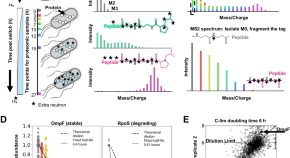
Global protein turnover quantification in Escherichia coli reveals cytoplasmic recycling under nitrogen limitation
Gupta, Johnson et al. quantify the turnover rates of ~3200 E. coli proteins, demonstrating that cytoplasmic proteins are recycled when nitrogen is limited and that protein degradation rates are generally uncoupled from cell division rates.
- Meera Gupta
- Alex N. T. Johnson
- Martin Wühr
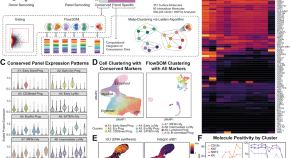
Terminal deoxynucleotidyl transferase and CD84 identify human multi-potent lymphoid progenitors
How lymphoid and myeloid specification occurs in human haematopoietic progenitors is not fully understood. Here the authors perform a proteomic screen on human bone marrow progenitors and suggest TdT + and CD84 - progenitors as lymphoid-primed progenitors with residual myeloid potentials.
- Ariel A. Calderon
- Sean C. Bendall
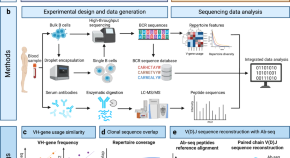
Benchmarking and integrating human B-cell receptor genomic and antibody proteomic profiling
- Khang Lê Quý
- Maria Chernigovskaya
- Victor Greiff
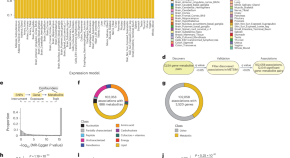
Metabolic gene function discovery platform GeneMAP identifies SLC25A48 as necessary for mitochondrial choline import
This study presents a multiomic Gene–Metabolite Association Prediction (GeneMAP) platform for discovery of metabolic gene function and identifies SLC25A48 as a mediator of mitochondrial choline import.
- Gokhan Unlu
- Eric R. Gamazon
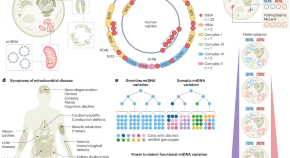
Mitochondrial genetics through the lens of single-cell multi-omics
This Review discusses emerging technologies and insights from mitochondrial DNA variant profiling obtained by single-cell multi-omics, demonstrating how the powerhouse of the cell may record clonal lineages and contribute to disease heterogeneity.
- Lena Nitsch
- Caleb A. Lareau
- Leif S. Ludwig

The potential climate benefits of seaweed farming in temperate waters
- Cameron D. Bullen
- John Driscoll
- Edward J. Gregr
News and Comment

High-throughput fitness screens link genes to unique phenotypes in human-restricted Salmonella
We used high-throughput transposon screens to examine the responses of generalist and host-adapted Salmonella enterica serovars to 25 stress conditions that recapitulate key stages of human infection. We identified and characterized numerous typhoid-specific gene networks, revealing a role for specific pseudogenes in shaping bacterial fitness outcomes.
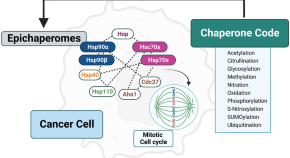
Epichaperomics reveals dysfunctional chaperone protein networks
Molecular chaperones establish essential protein-protein interaction networks. Modified versions of these assemblies are generally enriched in certain maladies. A study published in Nature Communications used epichaperomics to identify unique changes occurring in chaperone-formed protein networks during mitosis in cancer cells.
- Mark R. Woodford
- Dimitra Bourboulia
- Mehdi Mollapour
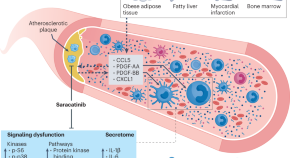
Modelling systemic risk factors in cardiovascular disease using single-cell biology
The plasma of individuals with atherosclerosis contains cytokines that induce a pathogenic signaling cascade in immune cells. Saracatinib, a dual kinase inhibitor that targets the tyrosine kinases SRC and BCR-ABL, can prevent activation of this phospho-signaling pathway implicated in the pathogenesis of cardiovascular disease.
- Claudia Monaco
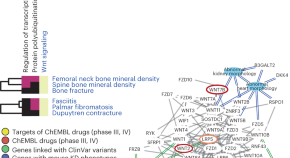
A pleiotropy map of cell biology covering 1,002 human traits
Interacting proteins commonly perform similar functions. A protein interaction network analysis of genes linked to 1,002 human traits identifies molecular mechanisms that are shared across traits and so-called pleiotropic biological processes, whose disruption might affect many aspects of human biology.
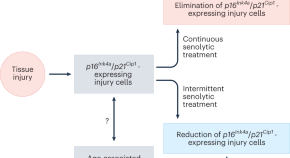
Senescent cells, senolytics and tissue repair: the devil may be in the dosing
There is tremendous interest in the development of drugs that target senescent cells (‘senolytic’ drugs) to treat a range of age-related morbidities. However, studies in mice that demonstrate impaired tissue repair following clearance of senescent cells raise questions about the potential risks of senolytic therapies. Closer examination of the available studies reveals the hopeful possibility of a ‘therapeutic window’ in which these risks can be minimized.
- Sundeep Khosla
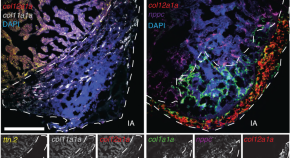
Transient activated fibroblasts contribute to zebrafish heart regeneration
In the zebrafish heart, several transient fibroblast types appear after injury. High-throughput lineage tracing revealed that injury-responsive fibroblasts are derived from two distinct lineage origins: the epicardium and the endocardium. Targeted cell-type-specific depletion showed that at least one fibroblast type has a critical role in heart regeneration.
Quick links
- Explore articles by subject
- Guide to authors
- Editorial policies
According to CMC 2024 H1
Dive into a comprehensive H1 2024 report covering crypto market analysis, key narratives and users trends, informed by world-class crypto data and CMC users insights.

Table of Contents
Chapter 1: market overview, is history repeating itself, only three sectors experienced positive growth in q2, chapter 2: market sentiment - unwrapping cmc’s unique data, most popular cmc categories, top coins per category, cmc users around the world, most popular coins per region, chapter 3: market pulse - state of each sector, layer-1 smart contracts: the rise of sol, ton and bnb, layer-2s: arbitrum maintains lead, base close behind, cross-chain: bridges shows diversity in terms of volume, nft: ethereum is no longer the main chain for nfts, gaming: pixels and matr1xfire lead, rwa: fastest emerging sector; blackrock's tokenization focus, meme coins: sol-based vs eth-based meme analysis; political memes, chapter 4: cmc listing/research insight, politics & policies.
Join us in showcasing the cryptocurrency revolution, one newsletter at a time. Subscribe now to get daily news and market updates right to your inbox, along with our millions of other subscribers (that’s right, millions love us!) — what are you waiting for?
Global Crypto Market Cap: $2.3 trillion (-14.5% in Q2)
24hr trade volume: $79.4bn (+223% in Q2)
Yes, repeating:
- In the early stages of the bull run, Bitcoin has historically led the market, where Bitcoin Dominance (BTC.D), a measure of BTC’s market cap against total market cap, will gain. BTC.D gained from 38.4% in November 2022 to 54% in this cycle.
- An increase in stablecoin supply, indicating an influx of capital into crypto markets, signals the onset of a bull market. Since the start of 2024, stablecoin supply has gone up 19.8%.
- The decrease in BTC's supply on exchanges was reflected in the 2021 bull cycle, as investors transferred BTC to cold wallets for long-term storage. This trend is currently playing out.
No, not repeating:
- The current bull cycle drawdown is less severe than previous cycles, with a max drawdown of 18% compared to over 50% in the 2021 bull, likely due to BTC as a maturing asset and ETF flows.
- BTC reached an all-time high of $73,000 before the halving. In all previous cycles, BTC only reached ATH after the halving due to a supply shock. This unprecedented move was primarily due to institutional inflows from spot BTC ETFs.
We are in the middle of the bull market, but retail is yet to be here
- So far, the bull market is driven by crypto natives and institutional investors.
- Over $17.1B in total institutional inflows , with Bitcoin gaining the majority at $16.7B.
- Meanwhile, retail user metrics like Google search trends, new crypto YouTube subscribers, and App Store rankings signal that most retail users still need to arrive.
CoinMarketCap is the world’s most trafficked crypto website and the number one source of crypto data, insights, and community. By analyzing the viewing behavior of our millions of users, we can detect emerging trends and changing priorities within the global crypto community.
From Jokes to Giants: Meme Coins Become Crypto’s Top Trend
For the first time, Meme Coins have become the most popular category in crypto, flipping the previously dominant Smart Contract, DeFi, and NFT narratives. Meme Coins accounted for ~23% of page views on CoinMarketCap, with over 25 million in June.
Surge in Solana's Popularity: Is SOL Challenging Ethereum's Dominance?
This month, the Solana ecosystem has garnered more attention than the Ethereum ecosystem. Although this doesn't directly reflect network activity, it signals a notable trend. Since October 2023, SOL and its meme coin ecosystem have gained significant momentum in both price performance and popularity. While Solana hasn't yet dethroned Ethereum, the surge in interest reveals its growing prominence in the crypto space.
AI Hype Declines from February Peak
In contrast, the popularity of AI as a trending topic has declined. After peaking in February, its popularity trended downwards, reaching only a 6.4% share in June.
In the broader meme coin space, we are also seeing new projects gather momentum at unprecedented speed compared to any previous cycle. Even in the AI category, the most popular projects for our users are mostly “meme-fied” AI concept tokens like Turbo.
This potentially marks a shift from the previous dichotomy of crypto versus traditional finance to a new split between establishment and anti-establishment forces within the crypto space.
Traditional Crypto Retreats to Basics: Ethereum Ecosystem Emphasizes RWA and AI
In the Ethereum ecosystem, away from the meme coin frenzy, the prevailing narratives center around Real World Assets (RWA) and AI distributed computing. These trends underscore Ethereum's efforts to bridge traditional finance with blockchain technology, a strategic move towards practical, real-world applications and pioneering innovations.
Meanwhile, the DeFi sector is returning to its foundational roots, with stablecoins now dominating interest. Previously, decentralized exchanges (DEXs) and derivatives captured the spotlight, driving much of the innovation and excitement within the sector. However, the current trend reflects a renewed focus on stability and reliability, with stablecoins offering a secure and predictable medium for transactions, savings, and lending.
Meme Momentum: CMC Data Reveals Rising Influence of Brazil, India, and Indonesia
This chart shows the breakdown of user traffic (over 200 million page views per month) on the CoinMarketCap webpage by country. We see a dramatic shift from Q1 to Q2, which aligns with the trend toward Meme Coins and away from more ‘traditional’ crypto.
Driven by the meme-centric market environment, Brazil has become the second largest country according to CMC crypto user traffic, with around 9% market share. It is followed by India (7.57%), Indonesia (6.5%), Germany (6.4%), and Russia (6.2%). Meanwhile, countries such as the USA, United Kingdom, and France, which have traditionally been more focused on BTC/ETH, DeFi, infrastructure, and institutional markets, have seen a decrease in crypto user market share.
Finally, this chart is a snapshot of the most popular coins per region in June 2024, again emphasizing the stunning surge in interest in meme coins across the global crypto community.
Market Share
The total market cap for Layer 1 Smart Contracts is $695.58 billion (-3.57% QnQ); Ethereum's Dominance (among major L1s) is 62.11%, the highest it’s been since 2024. The SEC’s approval of Ethereum Spot ETFs was the catalyst for this milestone.
BNB and Solana have been gaining momentum, adding another $42 billion and $18 billion YTD, respectively, and both expanded their market share among the L1s.
Solana is the No.1 chain by Active daily addresses with over 1.6 million active addresses, followed by BNB’s 1 million. Both SUI and TON ecosystems have seen increased activities on the network. (News linked to the recent grants & popular projects)
Ethereum has seen record low gas fees in Q2, with only two gwei around the end of April. Ethereum hasn’t seen such gas fee levels since 2020, before the 2021 DeFi summer. A few reasons contributed to this: 1) the fast-growing adoption of L2s diverted most of the transactions; the recent Dencun upgrade also lowered the costs for L2s. 2) April and May saw the market excited with SOL-based meme coins, reducing the DeFi transactions on ETH mainnet.
Leading L2 network Arbitrum saw a surge in transactions in early May, likely due to an uptick in DeFi as total transaction volume on Uniswap (Arbitrum) surpassed $150 billion.
Following the launch of Bitcoin Ordinals, a new wave of innovation has hit the Bitcoin ecosystem. This includes layer-2s, which aim to introduce faster and cheaper transactions, enhancing Bitcoin's functionality and efficiency.
Many new and promising entrants, such as Merlin Chain, Botanix, and Citrea, are challenging leading Bitcoin L2s such as Lightning Network and Stacks.
Cross-chain bridge's market share is fairly distributed among the top 5, showing diversity and healthy competition
Ethereum is no longer the main chain for NFTs, at least so far this cycle.
With the introduction of Bitcoin inscriptions and protocols like Ordinals and Runes, Bitcoin has a slight lead over Ethereum in terms of total volume traded.
Ethereum NFT trading volume and the number of traders are on a downtrend.
Ethereum NFT market’s total market capitalization and trading volume reflect the trend, showing a gradual decline. This is also reflected in a decrease in user activity.
Solana saw a surge in NFT trading from October 2023, but the volume has died off.
Ronin-based Pixels leads in DAU, Matr1x FIRE emerges as second
BlackRock’s BUIDL fund leads by AUM, reaching half a billion dollars in less than three months.
On average, Solana-based meme coins outperformed Ethereum-based by almost 8X YTD
While there are meme coins on practically every L1 or L2 chains, most of the attention, activity, and trading volume have been fixated on Solana and Ethereum
ETH memes were more established, with many launched in 2023 or earlier, whereas most SOL memes were launched in late 2023 or 2024
This is likely due to the rush of speculative capital from other chains, attracted by the explosive rallies of WIF and BONK, causing more memes to pump and attracting even more capital and attention.
Trump leads in political meme tokens rivalry
Crypto is shaping up to be a significant topic for the November US elections, and many are speculating through these political meme coins.
Recent developments in U.S. politics have highlighted a significant shift regarding cryptocurrency.
- Bipartisan Support : Crypto-friendly legislation has garnered unexpected bipartisan support, with prominent Democrats like Chuck Schumer and Nancy Pelosi emerging as allies. This has resulted in a potential isolation of crypto skeptics, including Senator Elizabeth Warren. In addition, the House passed a significant crypto regulation bill with substantial Democratic support, indicating a legislative shift towards more crypto-friendly policies. The Senate passed a resolution to repeal SEC crypto guidance, defying a White House veto threat.
- Changing Administration Stance : The Biden administration has shown a new willingness to engage with the crypto industry, stepping back from earlier positions and expressing a desire to work with Congress on crypto policy.
- Republican Alignment : Republicans, including former President Donald Trump, are increasingly aligning with the crypto industry, with Trump accepting crypto donations and advocating for digital asset traders.
Over 1 million of Bitcoin are now held in ETFs
Since the approval of U.S. spot Bitcoin ETFs on the 10th Jan 2024, there are now over 70 spot Bitcoin ETFs globally, which attracted over $28billion additional inflows. Collectively, there are over $72billion worth of Bitcoin held in these ETFs and funds by institutions globally, which changes the dynamics in this market cycle. Institutions are often restricted by their asset allocation strategies, which means they would balance their portfolios as per the volatility appears in the market.
In terms of ETH supply, Significant portion of ETH supply inaccessible to new spot ETFs. Around 17% of the ETH can be categorized as idle or relatively illiquid, together with the ETH used as gas, in protocol treasuries, and staked, it further limits the supply of ETH available. To the extent that existing uses limit the available supply available to the new spot ETF products, any incremental increase in demand could have a larger impact on price.

CMC Research
CoinMarketCap Research aims to leverage our data analysis and bring unique insights into the crypto market
Related Articles
Join the thousands already learning crypto!
Join our free newsletter for daily crypto updates!
Have questions about buying, selling or renting during COVID-19? Learn more
Zillow Research aims to be the most open, authoritative source for timely and accurate housing data and unbiased insight.
- The Rental Market Slowdown is Leveling Off (June 2024 Rental Market Report)
The Numbers
JUNE 2024 U.S. Typical Home Value (Zillow Home Value Index)
$362,482 (3.2% YoY)
JUNE 2024 U.S. Typical Rent (Zillow Observed Rent Index)
$2,054 (3.5% YOY)
JUNE 2024 Change in New Listings
MAY 2024 Typical Mortgage Payment
- Mortgage Rates Slightly Higher This Week But Relatively Flat In June
- May 2024: New Home Sales Fell Despite Easing Mortgage Rates in May
- April 2024 S&P Case-Shiller Price Index: Home Price Growth Stalls Amid Rising Inventory
- May 2024 Housing Starts: New Construction Slows As Inventory Accumulates
- Buyers Need a $127,000 Down Payment to Afford a Typical Mortgage Payment
- Mortgage Rates Slightly Higher This Week But Trending Lower
- Affordability crisis: Housing Shortage Worsened Despite Pandemic Construction Boom
- Despite 7% Mortgage Rates, One in Seven Families Could Still Afford To Take On A New Mortgage
- Zillow Home Value and Home Sales Forecast (May 2024)

IMAGES
VIDEO
COMMENTS
Stay updated with the latest science news, discoveries, and analysis from Nature, the world's leading research journal.
Breaking science news and articles on global warming, extrasolar planets, stem cells, bird flu, autism, nanotechnology, dinosaurs, evolution -- the latest discoveries ...
Browse the latest on research analysis from the world's leading research journal.
The latest science news and groundbreaking discoveries, with expert analysis and interesting articles on today\'s most important events and breakthroughs.
Now research establishes long-distance linkages between tipping elements, with the network analysis offering insights into their interactions on a global scale.
Analytical Chemistry. Engage with the scientific community and discover what ACS has to offer in the field of analytical chemistry. For the generalist, Analytical Chemistry is a peer-reviewed research journal devoted to new and original knowledge that will broaden readers' professional interests and keep them aware of the role of analytical ...
Active surveillance in clinical settings, along with effective sequencing strategies and downstream analysis, will be essential in the identification of novel strains, tracking of transmission, and containment of adverse clinical effects of C auris infections.
The effectiveness of COVID-19 vaccine in the prevention of post-COVID conditions: a systematic literature review and meta-analysis of the latest research - Volume 3 Issue 1
Farhad Islami, Cancer Disparity Research, American Cancer Society, 270 Peachtree Street, Atlanta, GA 30303, USA. ... notably for physical inactivity and carcinogenic infections. 2-4 This new information, alongside changes in the number of cancer cases and deaths over time―because of changes in population size, aging, and cancer trends―and ...
Discover Google Research. We publish research papers across a wide range of domains and share our latest developments in AI and science research.
Read the latest news focusing on Biotech drug developments, clinical research and pharmaceuticals.
Writing in The Conversation, Professors Mark Maslin, David Thornalley and Dr Jack Wharton's (UCL Geography) new research has found the Gulf Stream, which carries warm water northwards through the Atlantic, was stronger and deeper 20,000 years ago than it is today.
Get full access to this article View all access and purchase options for this article.
Get the latest updates on cancer waiting times in England, and what it means for people with cancer, from Cancer Research UK
Almost two-thirds of big wind and solar plants under construction globally are in China, where surging renewable capacity has squeezed coal's generation share to new lows, research released on ...
This paper aims to provide an overview of the use and assessment of qualitative research methods in the health sciences. Qualitative research can be defined as the study of the nature of phenomena and is especially appropriate for answering questions ...
Genomic analysis is the identification, measurement or comparison of genomic features such as DNA sequence, structural variation, gene expression, or regulatory and functional element annotation ...
In this article, we have offered a roadmap for introducing individuals who are new to qualitative research to the process of conducting analysis, specifically a thematic analysis.
Discover the hottest topics and trends in analytics and big data. TDWI Upside articles cover emerging tech, best practices in analysis by vendor-neutral, expert authors.
Examine simplifies nutrition and supplementation — through meticulous analysis of the latest scientific research — to help answer your questions on how to be healthier.
Authorities identified the gunman as a 20-year-old man from Bethel Park, Pa., a town about an hour's drive from the site of the shooting.
This article is a practical introduction to statistical analysis for students and researchers. We'll walk you through the steps using two research examples. The first investigates a potential cause-and-effect relationship, while the second investigates a potential correlationbetween variables.
Research Methods | Definitions, Types, Examples Research methods are specific procedures for collecting and analyzing data. Developing your research methods is an integral part of your research design. When planning your methods, there are two key decisions you will make.
Analytical chemistry is a branch of chemistry that deals with the separation, identification and quantification of chemical compounds. Chemical analyses can be qualitative, as in the ...
Qualitative research involves collecting and analyzing non-numerical data (e.g., text, video, or audio) to understand concepts, opinions, or experiences.
New Market Area Library hosted author and DNA researcher Marie Rundquist, as she shared her findings of historical data, genealogical records and DNA analysis. The information she found was able ...
Systems analysis articles from across Nature Portfolio. Systems analysis is the study of a complex system's interacting parts, while keeping a eye on their function in the integrated whole ...
Dive into a comprehensive H1 2024 report covering crypto market analysis, key narratives and users trends, informed by world-class crypto data and CMC users insights.
Zillow Research aims to be the most open, authoritative source for timely and accurate housing data and unbiased insight.